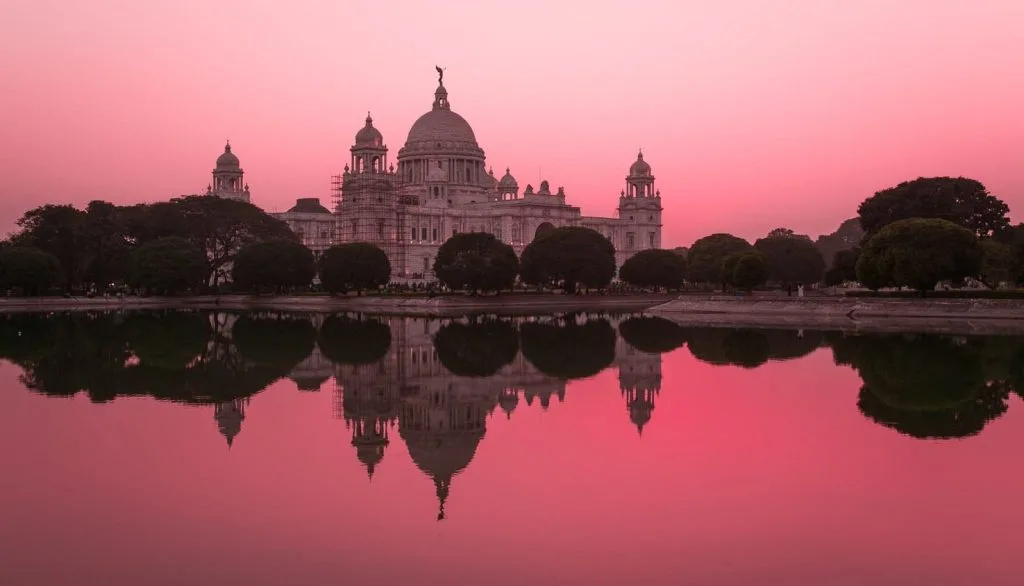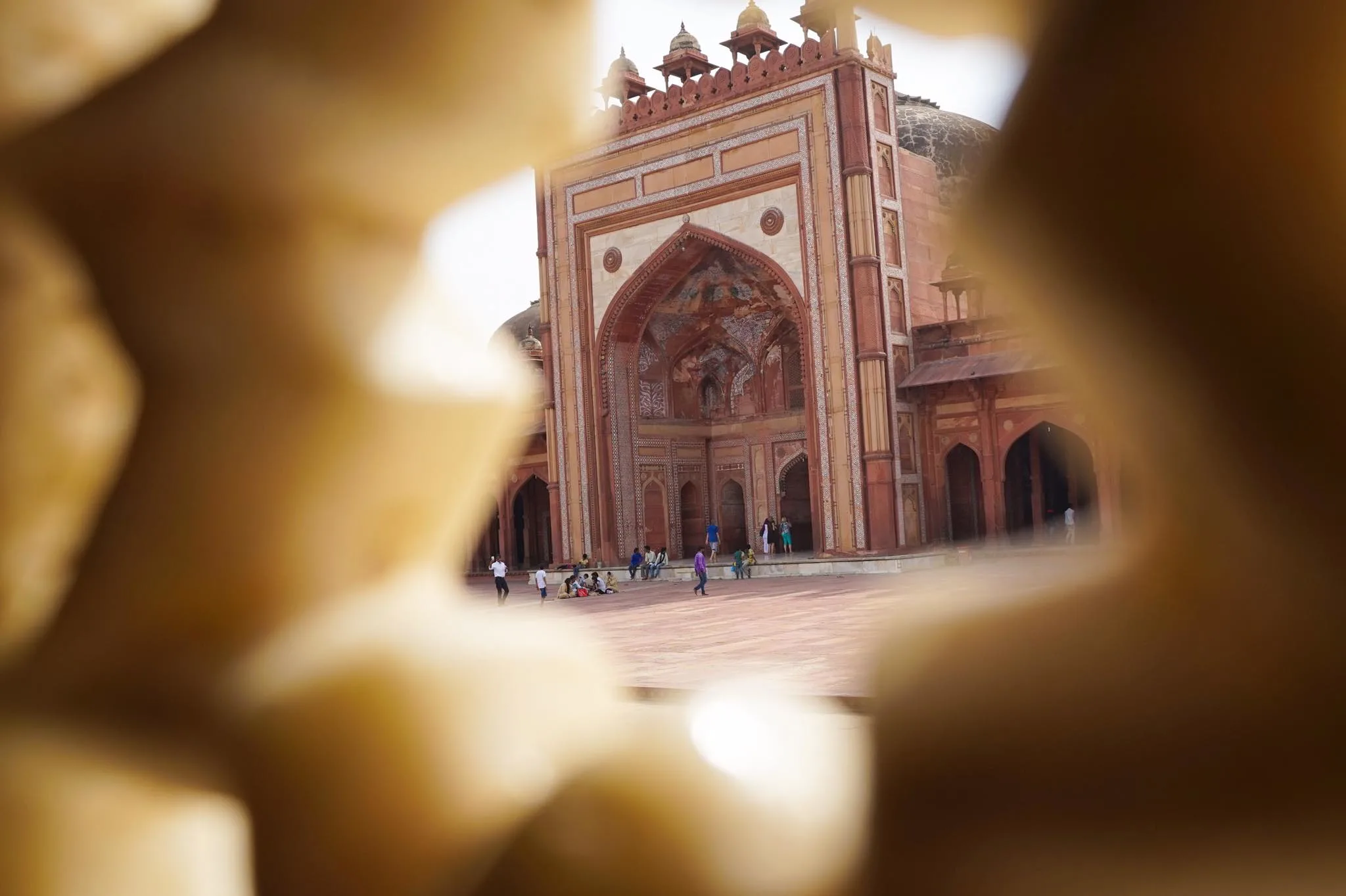Expert travel storyteller Jordan Adkins, founder of InspiredByMaps.com, brings a decade of adventures across 101 countries and 450+ UNESCO sites into rich, off-the-beaten-path narratives, melding ecological expertise with genuine, seasoned travel insights. His full bio can be found here.
India is well known for its extraordinary natural diversity, vibrant culture, and remarkable urban landscapes. Fittingly, India is also home to thirty-eight of the more than 1,000 World Heritage Sites worldwide, as inscribed by the United Nations Educational, Scientific, and Cultural Organization (UNESCO).
India’s alluring UNESCO sites include magnanimous temples, extensive national parks, ancient wonders and modern marvels. These sites range from the emblematic Taj Mahal and the spectacular city of Jaipur to the far-flung Valley of Flowers National Parks and mysterious Sundarbans.
The theme of culture is prevalent throughout these 38 sites. However, there are also critical natural and mixed sites that reflect India’s remarkable natural heritage.
Some of these sites are landmarks of India, but a few are somewhat obscure and likely only known to the most persistent of travelers.

UNESCO is a bureau of the United Nations that endeavors to support the protection and growth of the world’s intellectual and cultural property and elects UNESCO sites due to their “outstanding universal value” in science, history, or culture.
As a result, UNESCO Sites are meaningful to the mutual interests of humanity – and legally guarded by international treaties.
Travel influenced by UNESCO sites allows visitors to explore secret spots, aid preservation, obtain specific knowledge about the history of Earth and humanity – and to wonder at unequivocally majestic sites. While a few such as the old town of Tallinn and Chichen Itza are famous around the world, there are far more untouristy UNESCO sites worthy of insertion in any ‘off-the-beaten-track’ bucket list.
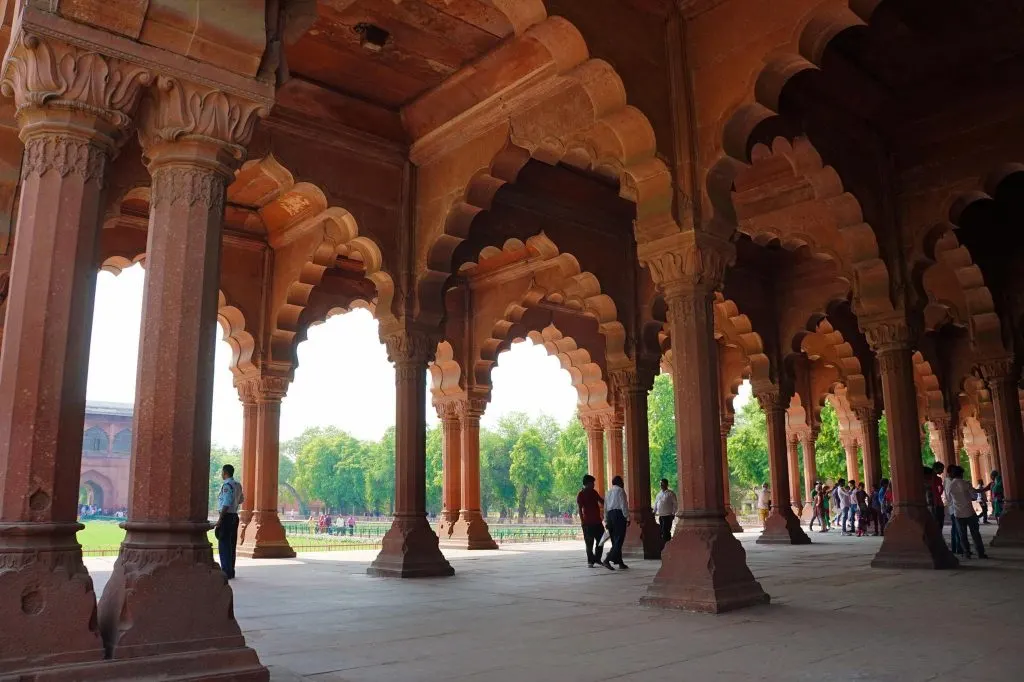
Inscriptions settle into two categories: cultural and natural locations, or a combination of both (mixed). There are currently 38 UNESCO world heritage sites in India, 30 cultural ones, seven natural ones, and one mixed. While I have visited most of them myself, I have included all sites here – so you can get an idea of what makes each special.
So, why not immerse yourself in one or more of these sites on your next India vacation? From breathtaking natural wonders to unprecedented feats of human engineering, check out our exhaustive list of India UNESCO sites to determine which places resonate with you personally. You can then use them as a roadmap for the trip of a lifetime.
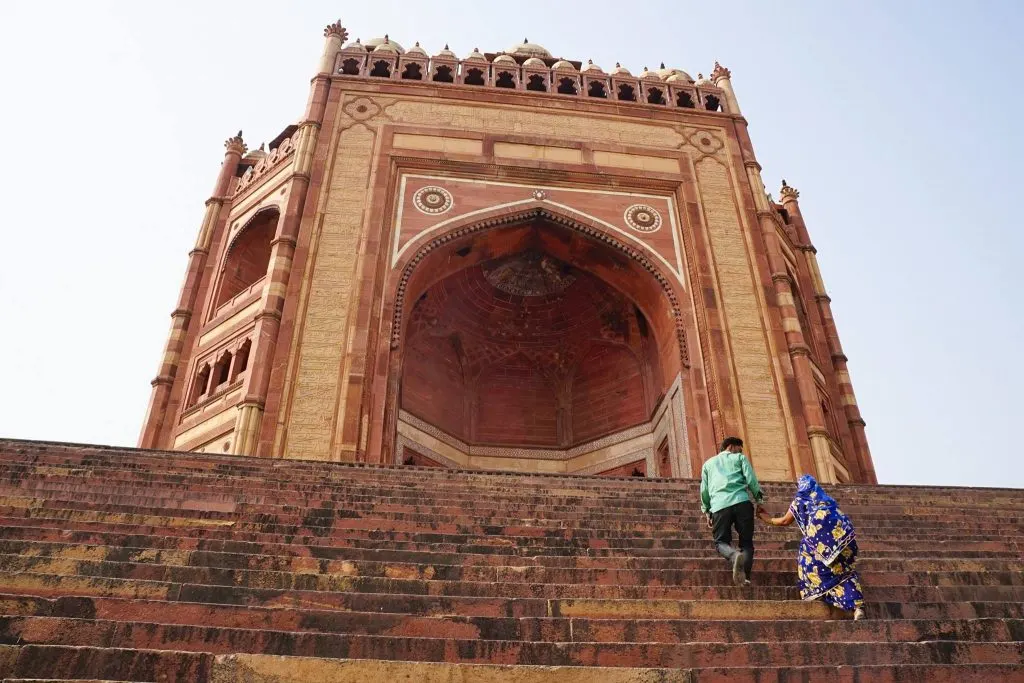
Page Contents
- Cultural UNESCO World Heritage Sites In India
- Agra Fort
- Ajanta Caves
- Archaeological Site of Nalanda Mahavihara at Nalanda, Bihar
- Buddhist Monuments at Sanchi
- Champaner-Pavagadh Archaeological Park
- Chhatrapati Shivaji Terminus (formerly Victoria Terminus)
- Churches and Convents of Goa
- Elephanta Caves
- Ellora Caves
- Fatehpur Sikri
- Great Living Chola Temples
- Group of Monuments at Hampi
- Group of Monuments at Mahabalipuram
- Group of Monuments at Pattadakal
- Hill Forts of Rajasthan
- Historic City of Ahmadabad
- Humayun’s Tomb, Delhi
- Jaipur City, Rajasthan
- Khajuraho Group of Monuments
- Mahabodhi Temple Complex at Bodh Gaya
- Mountain Railways of India
- Qutb Minar and its Monuments, Delhi
- Rani-ki-Vav (the Queen’s Stepwell) at Patan, Gujarat
- Red Fort Complex
- Rock Shelters of Bhimbetka
- Sun Temple, Konârak
- Taj Mahal
- The Architectural Work of Le Corbusier, an Outstanding Contribution to the Modern Movement – The Complexe du Capitole in Chandigarh
- The Jantar Mantar, Jaipur
- Victorian Gothic and Art Deco Ensembles of Mumbai
- Natural UNESCO World Heritage Sites In India
- Mixed UNESCO World Heritage Sites In India
Cultural UNESCO World Heritage Sites In India
Agra Fort
Agra Fort is a historical fort in the Indian town of Agra. It was the principal residence of the Mughal Emperors until 1638, when the capital was transferred to Delhi from Agra. Until the British conquered it, the last Indian rulers to occupy this Fort (which could be more accurately described as a walled city) where the Marathas (recognized to a large extent for releasing most of the Indian subcontinent from the Mughal rule.)
Located close to the Taj Mahal gardens, this prominent Mughal fortress built in the 16th-century is known as the Red Fort of Agra. The whole fortress is constructed of red sandstone, thus its name. Protected within the 2,5 km-long towering walls, here was the Mughal rulers’ imperial town.
This consists of many fairy-tale palaces, such as the Jahangir and Khas Mahals, built by Shah Jahan, public halls such as the Diwan-i-Khas, and two rather magnificent mosques.
There are two prominent gateways to the Fort: the “Delhi Gate” and the “Lahore Gate.” The Delhi Gate is not accessible to the public as the Indian military (specifically the Parachute Brigade) still resides in the northern portion of Agra Fort. Thus tourists can only enter via the Amar Singh Gate.
While the Red Fort of Agra is often overshadowed by the Taj Mahal, it still makes for a fascinating visit – even more, if you take the time to admire its various architectural styles and complex history.
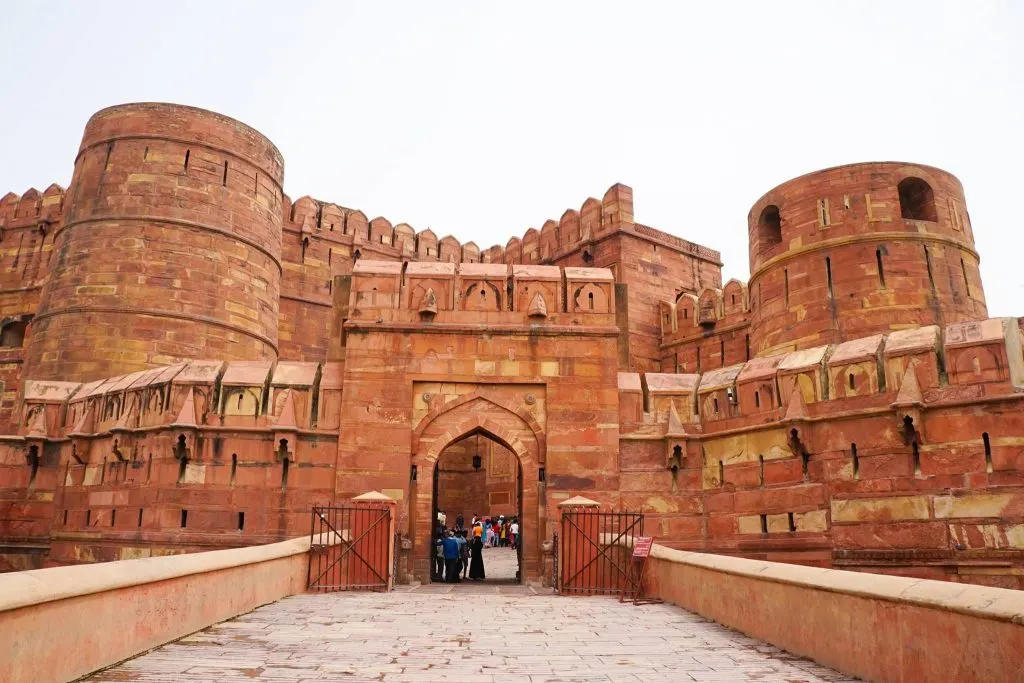
Ajanta Caves
Ajanta Caves is an ancient cave site that features rock-cut Buddhist temples totaling 30 caves and one unfinished one. Feels more like being on a movie set, so it’s’s really quite impressive!
The cave temples are tucked away in the hills of Northwest India, 200 miles from Mumbai. I had the unique opportunity to explore them as a day stop while aboard the most luxurious train in India, The Deccan Odyssey.
There are 6 six ways to travel to Ajanta Caves from Mumbai. These modes of transportation are by train, bus, night bus, car, or plane. The cheapest way to reach Ajanta Caves from Mumbai is by bus and night bus, and the quickest way is by flying or a taxi. Of course, another available option is to drive yourself to the caves, but driving in India can be challenging for many tourists.
The caves are said to have been built during two distinct time periods. The first main series of caves were created during 200 BCE, and the other one was finished during 600 CE. The caves which are cut into the mountainside were made by using the Indian’s unique artistic technique of rock cutting horse-shoe shaped temples, near the narrow stream of Waghora.
In each cave, one will find ancient sculpture, wall murals, and ceiling paintings. Each cave is also classified either as Vihara, monasteries with residence halls or Chaitya-grihas, sanctuaries/stupa monument halls. Due to its priceless and extensive artistic significance that needs to be preserved and restored, the UNESCO World Heritage Center selected Ajanta Caves as part of their preservation endeavors. The paintings and wall murals inside the caves are also said to be the finest surviving picture galleries that exist from the ancient world and, certainly, is a grand representation of Indian art and history.
Personally, part of the allure of the Ajanta Caves, for me, was the fact that they were discovered, by chance, by a group of hunting parties, led by Captain John Smith while hunting a tiger. Tracking the tiger that slipped into a ravine resulted in the accidental discovery of the caves.
Also, luckily, most of the caves are left shrouded by darkness, without destroying their mystery with artificial lighting. Lastly, the painting techniques in the caves are quite similar to the European fresco technique, which makes me wonder as to how two very different places could have had such similar artistic styles.
Basically, they are just a fascinating place to explore and learn about history!
Explore by Olga Maria from Dreams in Heels
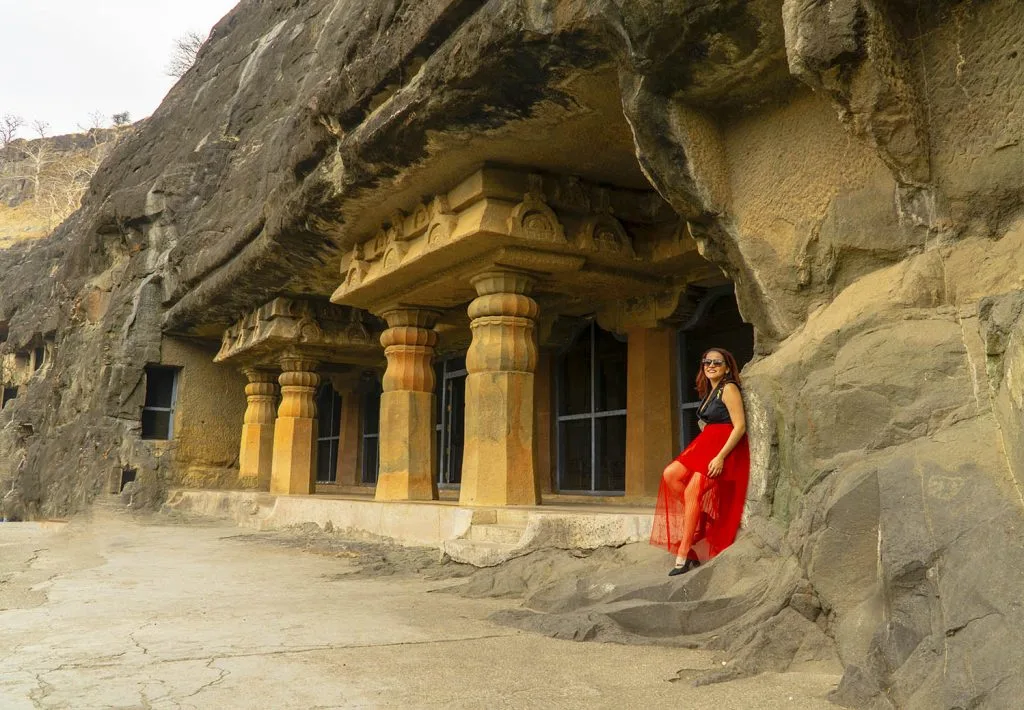
Archaeological Site of Nalanda Mahavihara at Nalanda, Bihar
Nalanda Mahavihara’s Archeological Site is situated in north-eastern Bihar, India. Nalanda is an ancient Mahavihara found inside the early Kingdom of Magadha (modern-day Bihar) in India.
If you don’t know what a Mahavihara is, don’t worry – you are not alone. I had no clue either, but you can imagine it is a sort of Buddhist monastery which also served as an esteemed center of learning. Many just refer to it as a university.
During antiquity, Nalanda gained considerable fame, recognition, and significance and became world-famous as a consequence of its participation in India’s formation as a great power from around the 4th century. Occupying an area of around 23 hectares, the Nalanda Mahavihara archaeological site protects ruins dating back to around 300 BC. Over time, it becomes one of the largest monastic schools in India reaching its zenith sometime after the 5th century A.D.
In the 13th century A.D., it was sacked, and abandoned ruins remain for researchers and curious tourists to explore today. The site includes stupas, chaityas, viharas, temples, and numerous decorative structures and valuable stucco, stone, and metal works. The architecture of the structures bears witness to the transition from the community as it grew over time in prominence.
The historical history of the property attests to Buddhism’s growth into a fully-formed religion and the stability of monastic and enlightening practices.
While Nalanda might not be particularly well-known in the West, its significance in the region at the time is hard to overstate. It remains so revered today that an Act of Parliament in India was used to establish Nalanda University again today. It emulates the famous ancient university of Nalanda and is an interesting place to visit in-and-of-itself.
Buddhist Monuments at Sanchi
Located 29 miles north-east of Bhopal, the Buddhist Monuments at Sanchi are an incredible sight to be seen during a summer holiday in India. The easiest way to reach Sanchi is by taking a taxi or a bus from Bhopal.
The incredible Sanchi Stupa is a Buddhist complex, famous for its Great Stupa, and other Buddhist monuments such as palaces, temples, and monasteries. The complex was named as a UNESCO Heritage site in 1989, due to being well-known for being one of the oldest Buddhist complexes in existence. The complex was completed following on from Indian emperor Ashoka’s adoption of Buddhism in the 3rd century.
Ashoka erected these stupas, and others around India, to encourage the spreading of his message and has been the focal point of the Buddhist faith in the region since it was built. The most iconic monument, the Great Stupa at Sanchi, sits atop the hillside and can be seen from miles around.
The Great Stupa is largely known for containing relics of Buddha himself, as well as some of the most beautiful carved stone artworks, which tell stories of the ancient world. It is also one of the most preserved stupas still in existence, an iconic testament to Ashoka. This incredible monument is built up from the ground in a hemispherical brick structure built over the relics of the Buddha.
Other stupas in the nearby area include Satdhara, Sonari, Mahamoggallana, Vihara, Bhojpur, and Andher.
Explored by Sophie from Sophie’s Suitcase
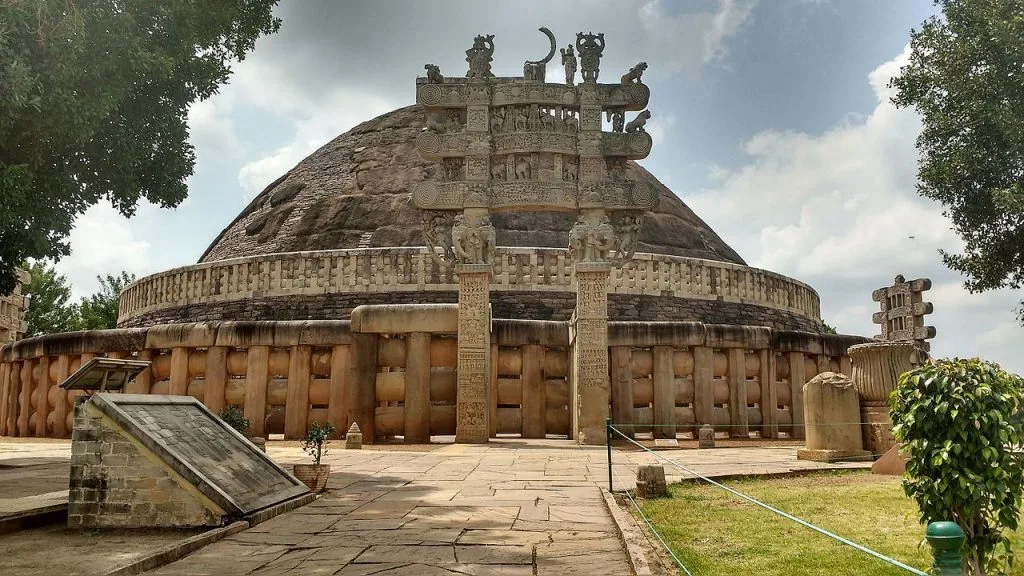
Champaner-Pavagadh Archaeological Park
The sites of Champaner Pavagadh were added to the UNESCO World Heritage list in 2004 as a representation of an outstanding blend of Hindu-Muslim architecture. Champaner-Pavagadh is located in the state of Gujarat and can be visited from the closest city, Vadodara. There are local buses to the site from the market place, where you can also find taxis. Depending on the time of year that you visit, you may wish to take a taxi and use your driver to take you around the sites, as they are quite spread out. There are auto-rickshaws available for rent at Champaner Pavagadh.
The 16th century remains here are from when Champaner Pavagadh was the Gujarat state capital, which was built by Mehmud Begda, and the remains are extensive. There are also fortifications, temples, residential areas, and palaces as well as animal structures and water installations – many dating from between the 8th until the 14th century. Pilgrims travel throughout the year to visit the Kalikamata Temple on top of the Pavagadh Hill. A huge number of the structures are still standing and can be explored.
Visiting Champaner Pavagadh gives you the opportunity not only to see glorious architecture in a really rather quiet site – there are few visitors outside of those on pilgrimage, but here you’ll find the only complete and unchanged Islamic pre-Mughal city as well as structures and a site that represent cultures that have now disappeared. The architecture of the Jami Masjid is recognized by UNESCO as a perfect blend of Hindu Moslem architecture.
The Indian Archaeological Society’s guidebook about Champaner Pavagadh is a great guide to the site and provides great detail about your visit.
Explored by Sarah from ASocialNomad
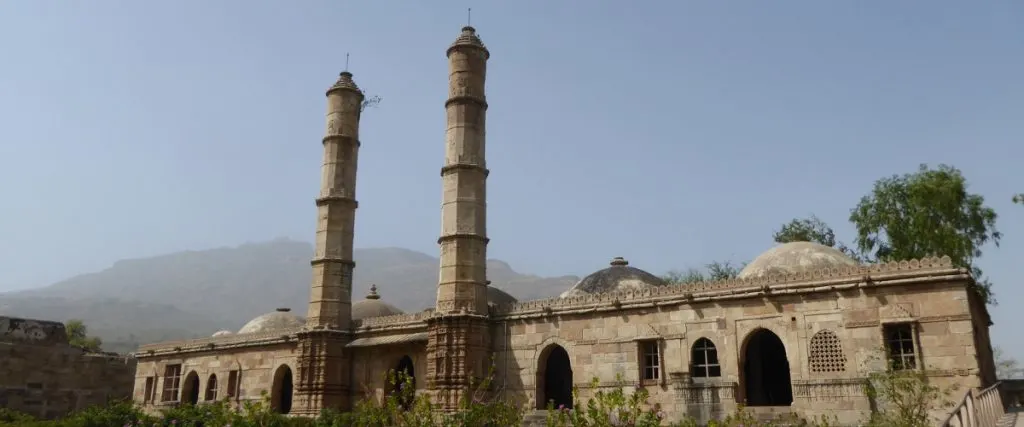
Chhatrapati Shivaji Terminus (formerly Victoria Terminus)
Trains came to India in the year 1853, when a 34 K.M. stretch of railway was built from Mumbai (then Bombay) to Thane. The station in Mumbai was called Bori Bunder. In the year 1878 CE, it was decided to expand the station’s facilities to accommodate more trains, and thus the idea of Victoria Terminus was born.
Victoria Terminus in Mumbai or V.T., as it is called, was built in place of Bori Bunder, to commemorate the Golden Jubilee of the reign of the British Queen Victoria, in the year 1888 CE, which is also a UNESCO world heritage building. The center of the building also sported a life-size statue of the Queen in a standing posture. The highlight is the high central dome adorned with a female figure holding a torch symbolizing progress.
V.T. is one of the finest examples of Italian Gothic architecture style, with a hint of Indian Palace architecture that makes it unique. It is said the architect Frederick Stevens was inspired by London’s St. Pancras station when he designed the V.T. and worked with Indian architects to include the Indian-ness.
It was decorated liberally by the students of J.J. school of art just across the road, which was founded in 1857. V.T. was also the headquarters of the Great Indian Peninsular railway then and now headquarters of Central Railways. It is an excellent demonstration of a fusion of two worlds, when British architects collaborated with Indian craftsmen to put together Indian architecture styles and idioms, producing a modern design distinctive to Bombay.
Even after more than 130 years, nothing has changed except that the Queen’s statue is missing. V.T. has now been renamed Chhatrapati Shivaji Terminus and is one of the busiest train stations in the world. It is said that over 3 million intercity and suburban commuters use this station every day. Every time I go to that part of the city, I stand in awe in front of V.T., while I sip my masala chai. Yes, I still call it V.T.!
Explored by Nisha and Vasu from Lemonicks.com
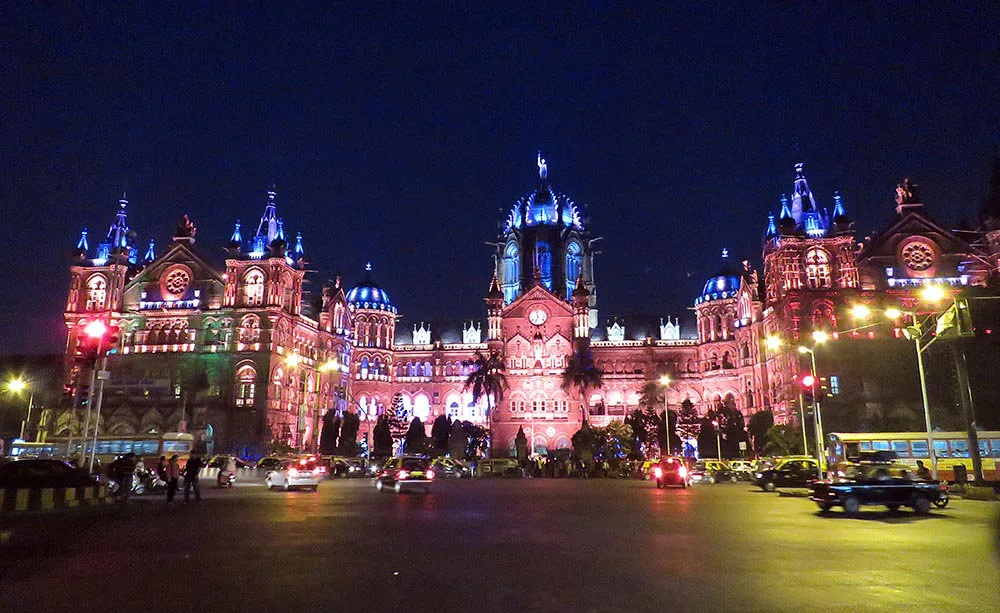
Churches and Convents of Goa
The churches and convents of Goa are a cluster of monuments that have been declared a UNESCO World Heritage site in 1986. These monuments are located in Old Goa, which used to be the capital city of Portuguese India when they had their colonies in India.
Over time, due to a deadly plague, the Portuguese shifted their capital to Panaji, which still remains the capital of the state of Goa. The group of monuments that are declared as world heritage sites includes the Basilica of Bom Jesus, Sé Cathedral, Church of St Francis of Assisi, St Augustine Church, St. Cajetan Church, Chapel of Santa Catarina, and Church of Our Lady of the Rosary.
Out of all these places to visit in Old Goa, Basilica of Bom Jesus remains a top attraction among tourists because it houses the mortal remains of St Francis Xavier, a missionary who co-founded the Society of Jesus. However, I personally love watching the sun go down from the Church of Our Lady of the Rosary, which is located on a hillock, looking over Old Goa and the Mandovi river.
Additionally, the architecture of St. Cajetan Church, which is still not on the tourist’s radar, makes it one of my favorite monuments among the cluster of the World Heritage monuments in Old Goa. This group of monuments is a short 15-20 minute drive from Panaji, the capital city of Goa.
You can either rent a motorbike or car, take a bus going from Panaji to Old Goa or hire a tuk-tuk or taxi cab in order to reach Old Goa from Panaji.
Explored by Soujanya from The Spicy Journey
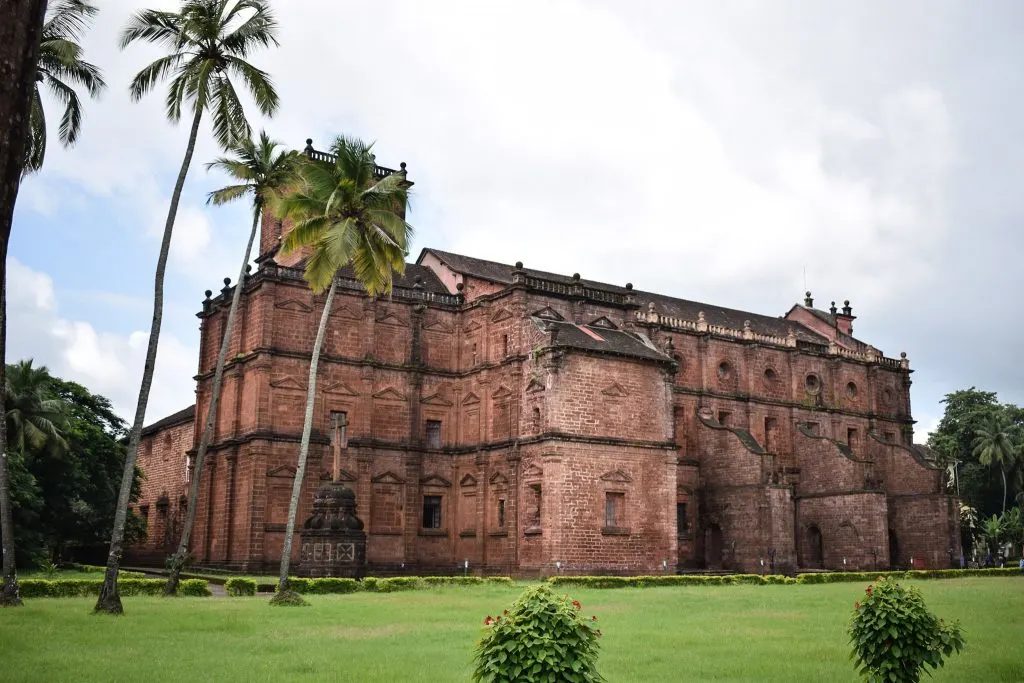
Elephanta Caves
Elephanta Caves Temples are located 10km off the coast of Mumbai on the island of Gharapuri in the Arabian Sea. The journey takes an hour to reach this UNESCO World Heritage site with regular ferries departing from the Gateway of India on Mumbai Harbour.
The island is home to five Hindu and two Buddhist caves hewn out of the basalt rock. There are two groups of caves in Cannon Hill, and Stupa Hill are thought to date back to the 6th century. The Indian government began the restoration of the caves in the 1970s to preserve this archaeological gem, and the ”City of Caves” was granted UNESCO status in 1987.
The most interesting rock art was in the Grand Cave in Cannon Hill, which measures a staggering 39 meters to the back from the entrance. Albeit a little damaged, the exquisite Sadashiv Trimurthi sculpture was the focal point portraying the Lord Shiva’s three personalities; The Creator, The Preserver, and The Destroyer.
The Grand Cave was still actively used for Hindu worship until the Portuguese invaders arrived in the 1500s. They discovered a black stone sculpture of an elephant on the island, hence, where the name of Elephanta Island was created.
I was thoroughly captivated by the stories as the guide showed us around describing the meaning behind the spiritualistic, mythological, and philosophical inscriptions depicted in the wall carvings of ancient society and culture.
Explored by Vanessa from Wanders Miles
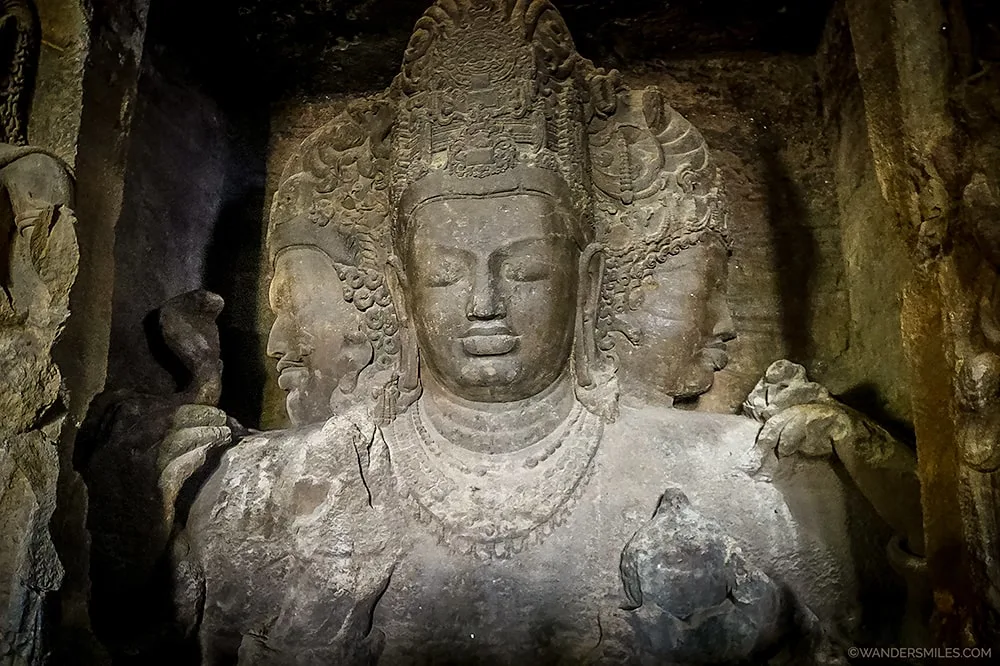
Ellora Caves
India is one of the earliest civilizations on Earth. Every corner of this country is a living museum. Many of the natural and architectural splendors of India have been recognized by UNESCO as World Heritage Sites. Among the 38 UNESCO World Heritage Sites, one of the most popular sites that were included in the list early on is Ellora Caves in the district of Aurangabad, state of Maharashtra.
Ellora Caves are a collection of rock-cut temples that belong to Hindu, Buddhist and Jain religions. These caves were excavated out of the basalt cliffs in the Charanadri Hills. It is estimated that the temples were created by various dynasties over centuries. The estimated timeline is between 600 and 1000 Common Era.
The Deccan region of India had experienced various religious waves in this phase, and the Ellora Caves aptly symbolize these changes. The Buddhist caves are relatively sparse, and the Jain caves contain some amazing paintings that have still retained their glory. All the temples are beautiful, but the mascot of Ellora Caves is undoubtedly the Kailasha Temple. This majestic monument has been cut top downwards and is still amazement to modern architects.
Ellora Caves can be easily reached from various parts of India. The closest city to Ellora caves is Aurangabad, and it offers much more than these caves to travelers. Aurangabad has a busy railway station and an active airport. Ellora Caves are less than 30 km from Aurangabad and take about 40 minutes in a taxi. It is a daylong outdoor activity, so summers are not the best season to visit Ellora.
Explored by Sundeep and Bedabrata from Delhi-Fun-Dos.com
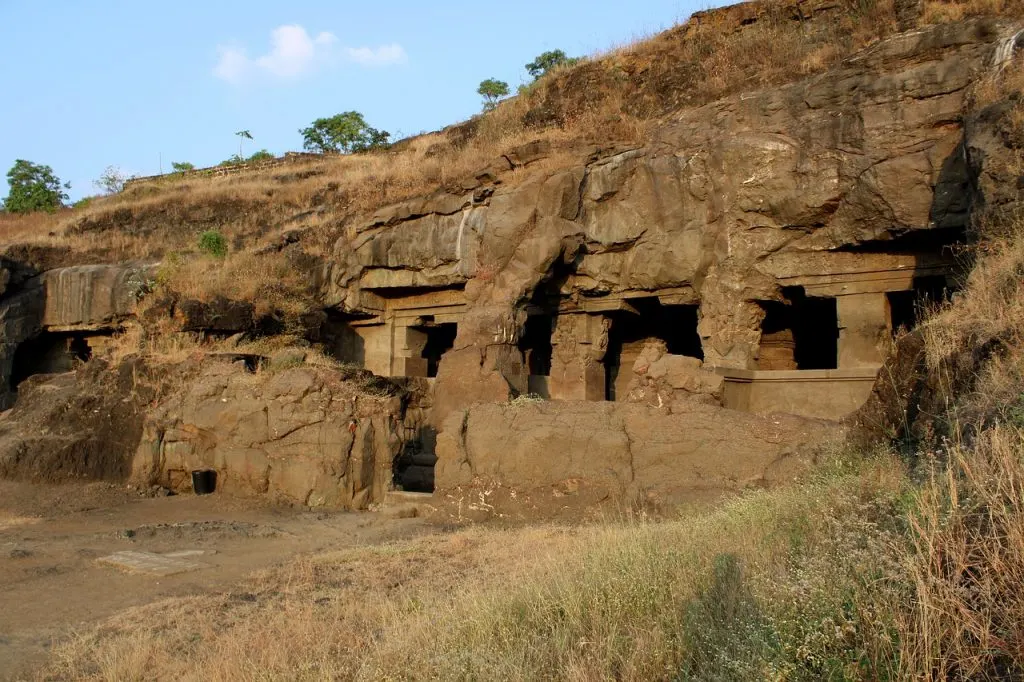
Fatehpur Sikri
Fatehpur Sikri in Agra, Uttar Pradesh District, India, was founded by Emperor Akbar in the latter half of the 16th century. The monument-style complex contains one of India’s largest mosques, the Jama-Masjid, all in a consistent architectural style. It was a useful stop for merchants traveling on routes throughout northern India and an indication of the Mughal Empire’s architectural accomplishments at the end of the sixteenth century.
Underneath the reign of Emperor Akbar (1556-1604), it would become the Mughal capital, which relocated its residence into the city and constructed a vast new palace complex. It was named the City of Victory, which is somewhat ironic given it only remained the Mughal Empire’s capital for ten years. In 1568, Akbar ordered the construction of Jami Masjid, one of the largest mosques in India, to accept some 10,000 faithful and was finished in 1571-72.
However, the city was quickly abandoned in the 1580s, possibly because of water shortage problems, but remained a vital stop for traders and was frequently occupied by numerous merchants from India, Persia, and elsewhere. The city’s architecture shows the difference between cultural and religious identities that came together here.
The red sandstone design in Akbar’s palace building primarily reflects Hindu architectural practices, and the influence of Indo Muslim intricate designs, which seem to be based on influences such as Persian miniature painting, is also abundant. The latter can be seen, in particular, in the ornate “House of the Turkish Sultan.”
Most of the walls were luminously decorated, the floors were lined with carpets, and the spaces were packed with many other pieces of equipment, ceramics, art, and glass collections. Jami Masjid has a clearer heritage from Islamic architectural styles, as one would presume. At the same time, its main arched entrance (or iwan) follows Persian designs mixed with some of the Indian décors.
Within some other buildings within the town, Buddhist and Jainist influences can also be traced, adding to the intriguing cultural tapestry this world heritage site in India presents.
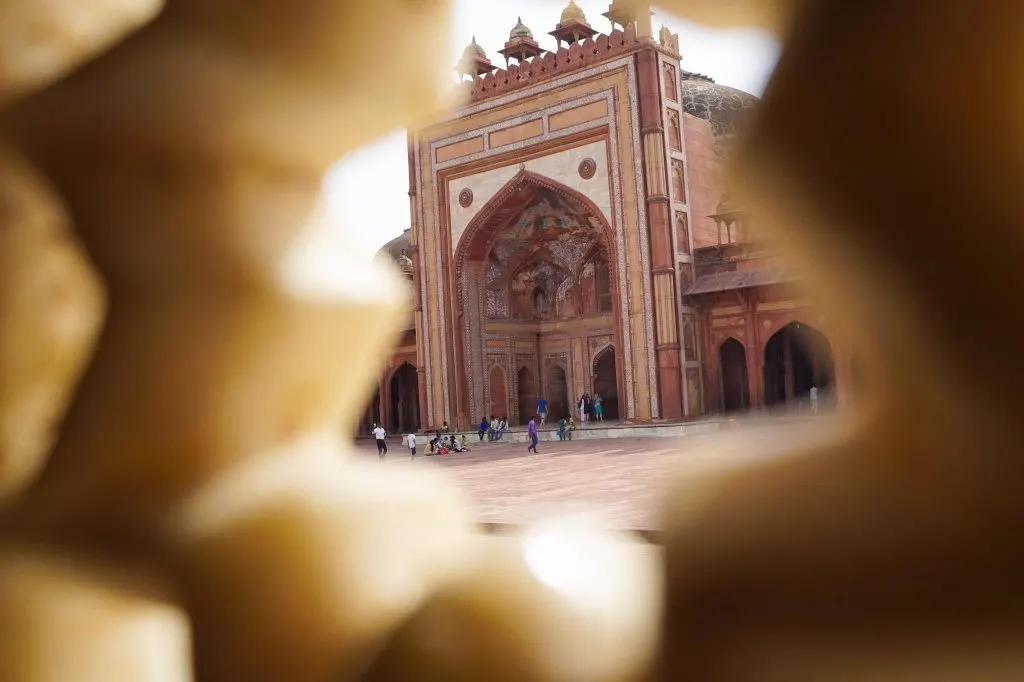
Great Living Chola Temples
The Chola Dynasty ruled South India and Sri Lanka for over 450 years, until the 13th century. Many remarkable Hindu temples were built during the Chola period; however, the three Chola temples — Brihadisvara at Thanjavur, Airavatesvara at Darasuram and Brihadisvara at Gangaikondacholapuram are a testimony to the fortune and artistry of the golden period.
Referred to as the Great Living Chola Temples, the centuries-old Airavatesvara, Gangaikondacholapuram, and Brihadisvara Temples are termed ”Living” because, in all three temples, same rituals, prayers, and practices are carried out persistently till today. All the three temples have been dedicated to the Hindu mythology God, Shiva and have carved paintings, bronze castings of the other Hindu gods as well.
The temples have been inscribed on the UNESCO list due to the creative architectural achievement and for being the standing reflection of the highpoint in the Chola dynasty.
The temples are located in the Southern Indian state Tamil Nadu and the closest major city to the temples will be Chennai. There are many state-run buses/ trains from Chennai to Thanjavur (Brigdeshwar Temple). Airavatesvara and Brihadisvara temples are 2 hours away from Brigdeshwar Temple and can be reached via a tuk-tuk. The best time to visit these temples will be early morning or early evening (before sunset) to witness the prayers being performed.
Wear modest clothes as the temples are religiously important for the Hindu culture. Plan your South India trip in the latter part of the year (preferably November to February) and don’t miss to try Dosa, a local delicacy.
Explored by Nishu Barolia from Tanned Travel Girl
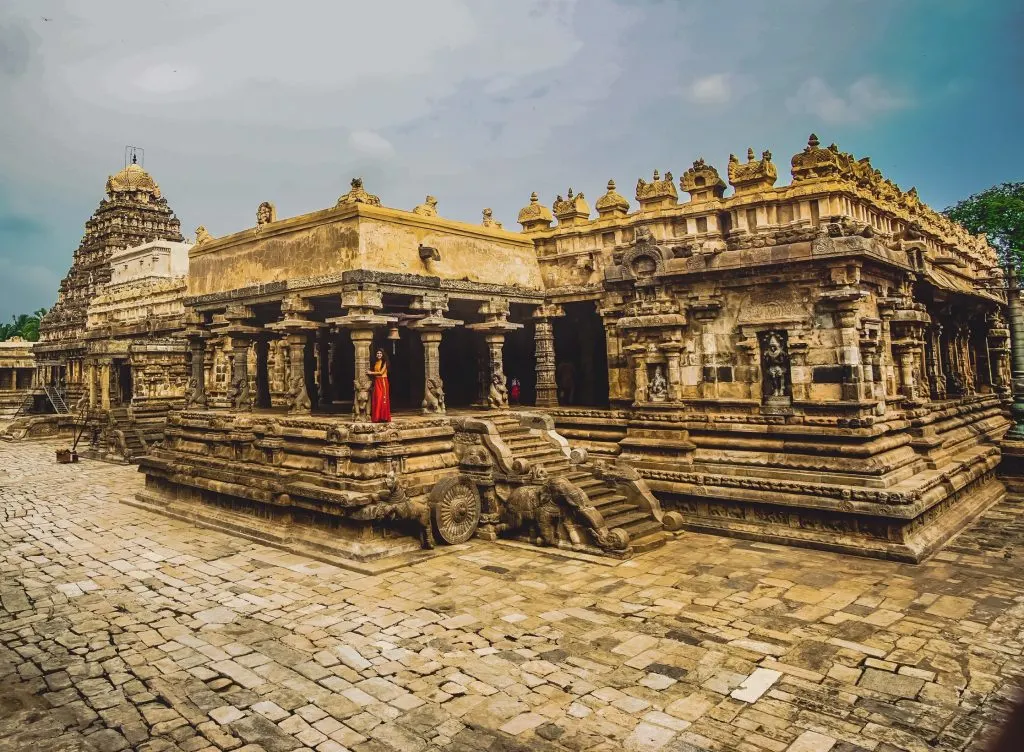
Group of Monuments at Hampi
If you are a history buff and want to touch the real history, come to visit Hampi, a mystical town located on the southern bank of the river Tungabhadra in Karnataka. Hampi is well connected with the rest of the country by train, bus, and plane.
The nearby station in Hospet which is the gateway to Hampi. If you want to come by plane, I would recommend flying to Bangalore despite the fact that Hubli is the nearby airport, as the connectivity from Hubli to Hampi is limited. Metro cities like Bangalore and Hyderabad are about 376 kilometers and 385 kilometers away from Hampi.
Hampi is not so popular but a cheap place to visit in India. The ancient ruins of Hampi are not overrun with tourists, but this might change in the future. It is divided into two parts: Virupaksha Temple and Hippie Island, and it lies within the ruins of the ancient kingdom of Vijayanagar(the last Hindu Kingdom), the former capital of the Vijayanagara Empire. This UNESCO World Heritage Site boasts a collection of historical sites depicting the excellent Dravidian style of art and magnificent Indo-Islamic architecture.
The most popular heritage monument in the ruins at Hampi is the Virupaksha Temple, which continues to be a sacred religious place for the Hindus. There are several other monuments such as the Royal enclave, Lotus Mahal, Vittala temple, Krishna temple & markets, Underground Shiva temple, which are also a part of this heritage site. Together, they’re known as the ”Group of Monuments at Hampi”.
What I liked most is the Indo-Islamic architecture and the history behind this ancient heritage site. We went with a guide, and he explained in detail each and every monument and temple. Group of Monuments at Hampi is a must-visit place in India if you have a keen interest in India’s rich history, vivid culture, art, and civilization.
Explored by Trijit from BudgetTravelBuff
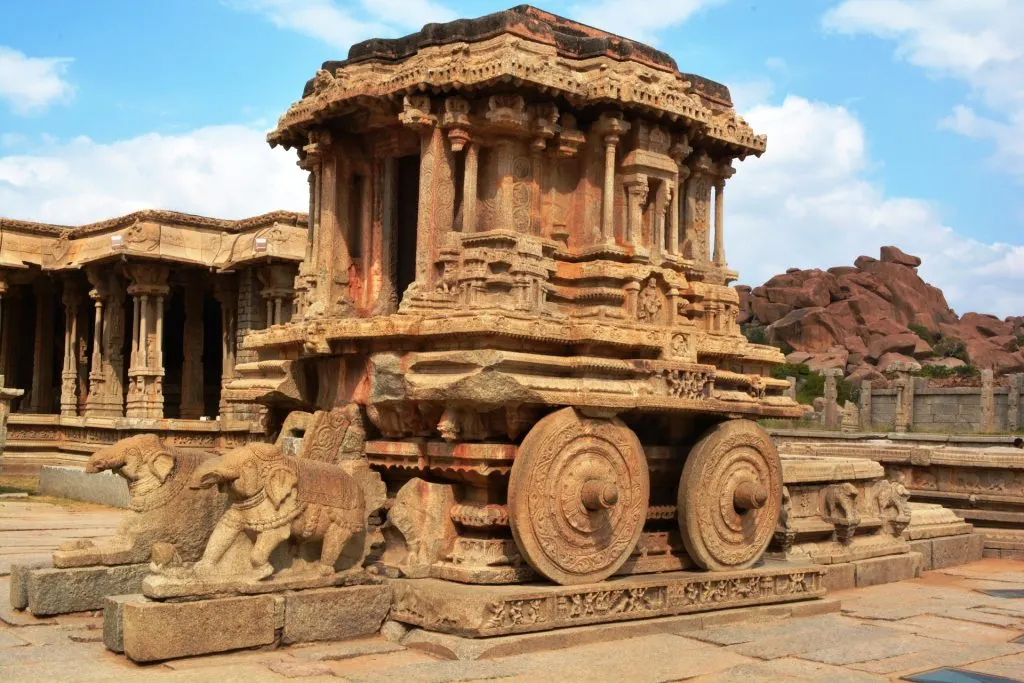
Group of Monuments at Mahabalipuram
Mahabalipuram is a small town in Tamil Nadu, about 60 km south of Chennai and about 100 km from Pondicherry. Mahabalipuram has always been a beautiful weekend getaways spot from Chennai and Pondicherry both, primarily because of the beautiful Shore Temple and the surrounding Group of Monuments, which, together, is a cultural UNESCO World Heritage Site (Year of Inscription: 1984). The group is composed of nearly 40 sanctuaries, including the largest open-air rock relief in the world.
Mahabalipuram, a.k.a Mamallapuram used to be the capital region during the reign of the Pallava Dynasty in the 7th century A.D. The Pallava rulers were popular for their inclination towards Tamilian art and culture. The renowned Shore Temple and other temple complexes and rock-carved caves were built during the Pallava period.
The tourist attractions incorporate structural temples like the Shore Temple and Olakkanesvara Temple, Mantapas, or cave temples like Mahishasurmardini Cave Temple, Krishna Cave Temple, Panchpandava Cave Temple, and Varah Cave Temple.
The fact that a monument so old was able to withstand the tsunami which strongly hot Southern part of India in 2004 bears testimony to the amazing skill of designers and the sculptors. And this is probably the main reason why most people love to visit Mahabalipuram again and again. Apart from the historical monuments, Mahabalipuram is also famous for its beaches and an array of beach resorts.
Tip: Avoid visiting Mahabalipuram in the months of March and April as the temperature can go as high as 42°C, making it difficult for you to bear the heat.
Explored by Sonakshi and Mainak at Places in Pixel
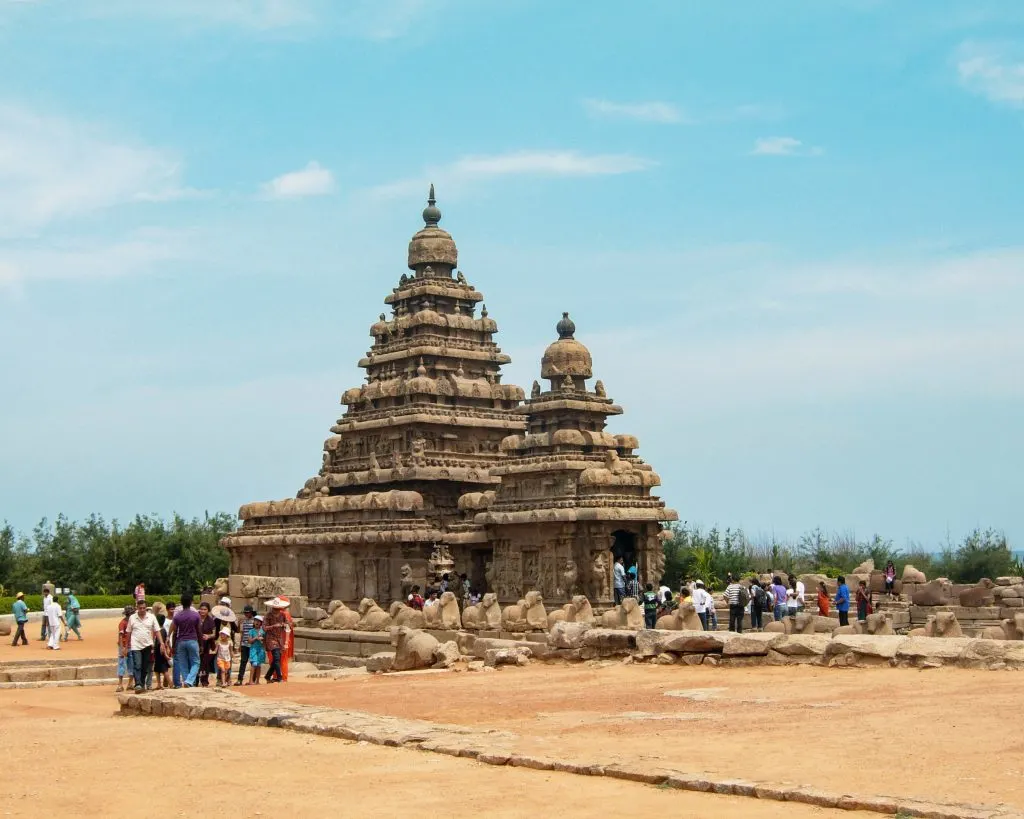
Group of Monuments at Pattadakal
India is chock full of UNESCO heritage sites, many of them unknown and unseen yet strikingly beautiful. The Group of Monuments at Pattadakal in northern Karnataka is one of them.
Pattadakal is home to 9 Hindu temples and 1 Jain shrine built during the 7th and the 8th centuries. This was the Chalukya era in southern India, and the Chalukya kings were huge patrons of temple art and architecture. They set up an architectural lab in Aihole (only an hour away from Pattadakal), where designs were created and approved. The best design was later implemented in Pattadakal.
Pattadakal was the cultural capital of the Chalukyas. Crown princes were coronated here in a ceremony called the “Pattavishekham.” Needless to say, the temples were made exquisite and befitting to the purpose they served.
The Group of Monuments at Pattakal are grand and intricately carved. However, there is something unique about them that you would not find elsewhere in India. These temples are a harmonious blend of both South Indian (Dravida) and North Indian (Nagara) architectural styles. And that is what makes them so special.
You would not want to miss out on the Virupaksha Temple, which is the largest and the finest temple in Pattadakal. It is a Dravida-style temple with opulently carved reliefs depicting stories from Hindu epics. Do keep an eye out for the windows here. Made of filigreed stone, each has a story to tell.
It is easy to get to Pattadakal by taxi from Badami (closest train station) or Belgaum (the closest airport). If you are already spending some time in Hampi, then you can conveniently explore the temples of Pattadakal and Aihole on a day trip.
Explored by Soumya from Stories by Soumya
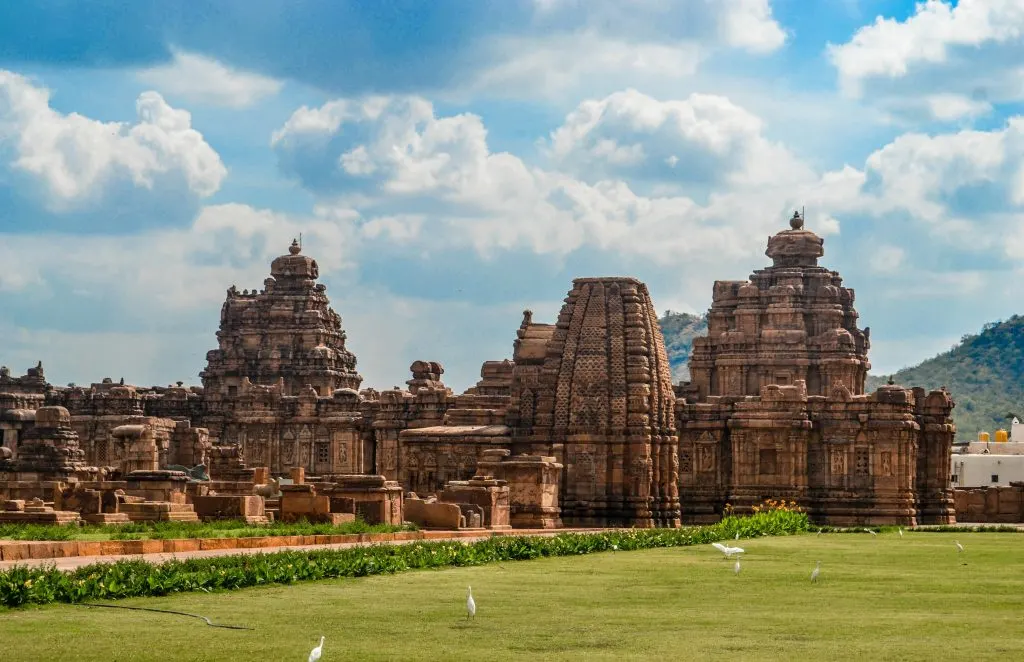
Hill Forts of Rajasthan
The Rajasthan Hill Forts is a prolific UNESCO World Heritage Site, established in Rajasthan state. There are six magnificent forts within the group, including Chittorgarh; Kumbhalgarh; Sawai Madhopur; Jhalawar; Jaipur, and Jaisalmer.
The forts’ varied architecture, some up to 20 kilometers in diameter, testifies to the dominance and power of the princely Rajput that prevailed in the region between the 8th and 18th centuries.
Major metropolitan centers, royal residences, market places, and other structures are embedded inside of defensive walls. Inside these hill fort, many temples often preceded the development of the fortresses. Within the safety of these walls, an extravagant court culture evolved over time that embraced teaching, music, and art.
Many of the urban centers sealed in the forts persist today, as did many temples and other sacred buildings. The fortresses leverage the environment’s natural protection and are built to utilize hills, deserts, rivers, and thick forests. The Rajasthan Hill Forts include innovative and complex structures to harvest water and allow its inhabitants to survive in harsh desert environments. Many of these are still in use today.
My favorite hill fort to visit was the Amer Fort, located only 11km ou of Jaipur. Founded by Maharaja Man Singh in 1592 AD, you can spend hours admiring the remarkable architecture and understanding its historical significance.
The power and opulence that was centered here are still visible within the majestic Fort, especially in the courtyard that previously held the apartments of the Maharajas. The frescoed arches, sandalwood doors, and intricate marble panels, all wonderfully preserved, will ensure you do not leave disappointed.
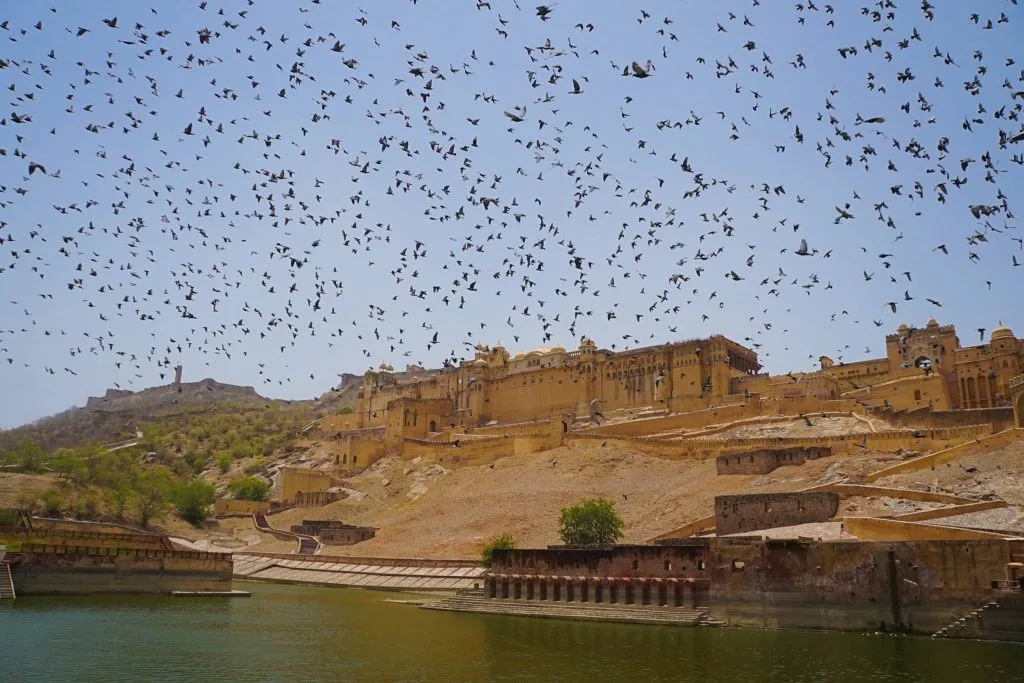
Historic City of Ahmadabad
Ahmedabad was the first UNESCO World Heritage City designated in India. Located in the state of Gujarat, Ahmedabad is known for its textiles and cultural hub of Gujarat.
Ahmedabad was founded by Ahmed Shah more than 600 years ago and the city has witnessed the history of India. Also, it is a major landmark city where Mahatma Gandhi has started India’s freedom struggle from ‘Sabaramati Ashram’. There are so many reasons it deserves the tag of UNESCO! The Old walled city of area 5.5 Kms is declared as UNESCO Site and the major attraction of Ahmedabad is its ‘Pols’.
Pols are residential neighborhoods that are considered as a peaceful coexistence of Hindu, Islamic, and Jain communities in the walled city area. The city stands for its ‘Peace’ from the time of King Ahmed Shah from his name city is known as ‘Ahmedabad’. If we pass through these old lanes, we can marvel at the architecture, historical monuments with colorful Markets everywhere!
If you really want to feel the essence of the walled city, take a Mandir to Masjid walk in early morning conducted by AMC (Ahmedabad Municipal Corporation). It covers a walkthrough Swaminarayan Mandir to Jami Masjid, which takes 3-4 hours.
My favorite part was walking through narrow criss-cross lanes of Pols which are hundreds of years old Havelis with rich architecture. You can capture daily life in the Poles when you walk! The Pols are a group of communities and each community has houses with unique symbols that depict their community and you can see it on the front side or at the doors of houses! Many of Havelis are turned into hotels to stay to get the feel of an old city!
The architecture of houses is unique and it is a blend of different religions. It includes open space, temple, secret passages, wooden facades, gates, chowks, etc. I recommend hiring a guide to take a heritage walk, else you will definitely get lost inside! The other major sightseeing places include ‘Sidi Saiyad ki Jali’, Sarkhej Roja, Adalaj Stepwell, and old city forts which are fine examples of architecture of the Mughal era in India. Don’t forget to visit the markets and food scene in Ahmedabad!
Getting there: The nearest airport to City Centre is Ahmedabad international airport and well connected with other cities of India and abroad. Ahmedabad is a major city of Gujarat and it is well connected with other metro cities of India by Train.
Explored by Mayuri from fernwehrahee.com
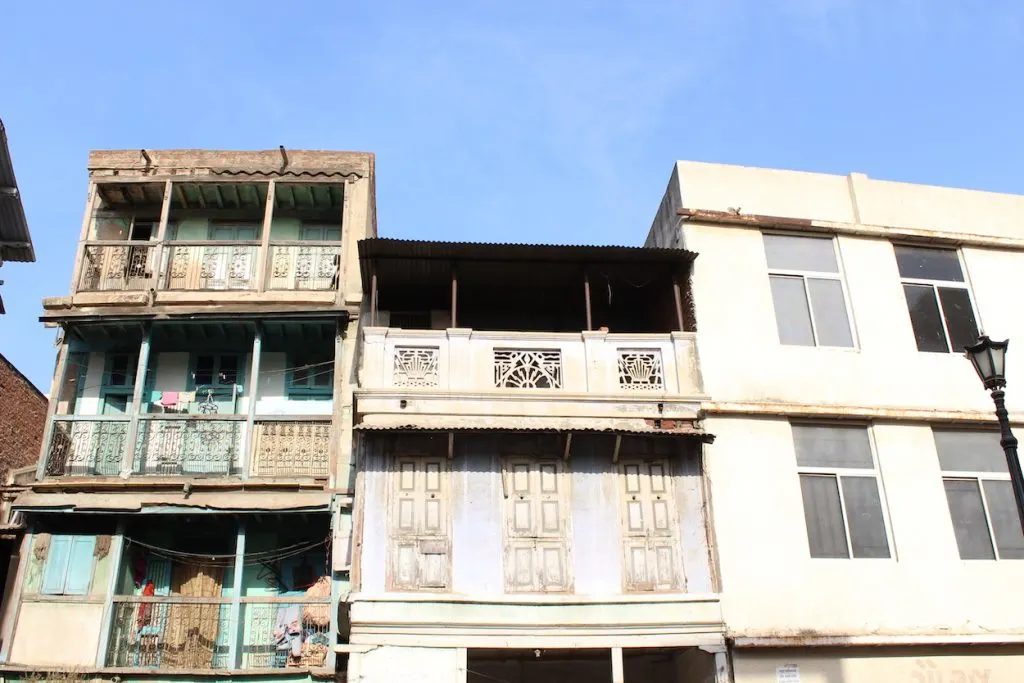
Humayun’s Tomb, Delhi
The Tomb of Humayun in Delhi was the first of the great monarchical mausoleums that came to epitomize Mughal architecture, reaching a zenith eight decades later in the majestic Taj Mahal.
Humayun’s Tomb is located in a vast 27.04-hectare complex that also comprises other emblematic 16th-century Mughal garden-tombs like the Nila Gumbad, Isa Khan, Bu Halima, Afsarwala and Barber’s Tomb. Humayun’s Tomb, with the patronage of Humayun’s son, the great Emperor Akbar, was constructed in the 1560s. Persian and Indian artisans collaborated in the construction of a garden-tomb significantly more prominent than any mausoleum in the Islamic world previously.
An illustration of charbagh (a four-quadrant garden with four rivers depicted by the Quranic paradise) is found at the Humayun’s Garden Tomb UNESCO site with its pools connected by canals. The garden is accessible from high gateways with grand pavilions in the hub.
The Tomb itself stands on a vast, terraced platform, and the interior is an ample octagonal space with vaulted ceilings connected to galleries or corridors. On the second floor, this octagonal plan is reiterated. The composition is of dressed stone with white and black marble along with red sandstone. Humayun’s garden-tomb is often nicknamed the ‘Mughal dormitory,’ as more than 150 Mughal family members are concealed within the chambers.
The Tomb is situated in the historical setting of Hazrat Nizamuddin Auliya, the 14th-century Sufi Saint. Because it is considered favorable for burial near a tomb of a holy man, it has been the densest ensemble of medieval Islamic buildings in India for seven decades.
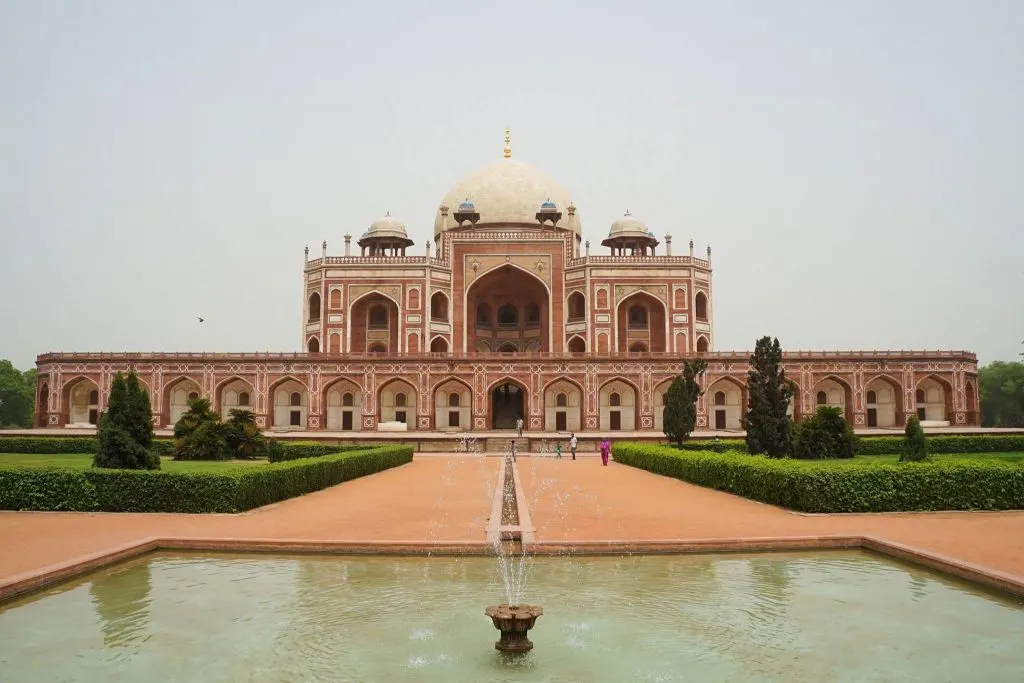
Jaipur City, Rajasthan
Sawai Jai Singh II established the walled city of Jaipur in the north-western Indian state of Rajasthan in 1727. unlike many other cities in the area on steep hills, Jaipur was built on the plain and designed in the framework of Vedic architecture and pursuant to a grid system.
The streets feature continuously colonnaded establishments that converge in the center and create wide spaces, called chaupars. The major roads have standardized façades in the market, store, residential, and temple buildings. The city design of the city reflects an interchange of concepts from classical Hindu, early Modern Mughal, and western cultures.
The grid system concept came from the West, while traditional Hinduist concepts are referred to by the organization of the various city sectors (chowkris). Engineered to be the business center, Jaipur has retained its local industrial, craft, and cooperative traditions to this day.
While Jaipur is famous for its many, many attractions – and is already a feature of most tourist itineraries in India. However, while you are visiting, be sure to pay particular attention to its urban layout if you want to understand why it has been inscribed as an Indian world heritage site.
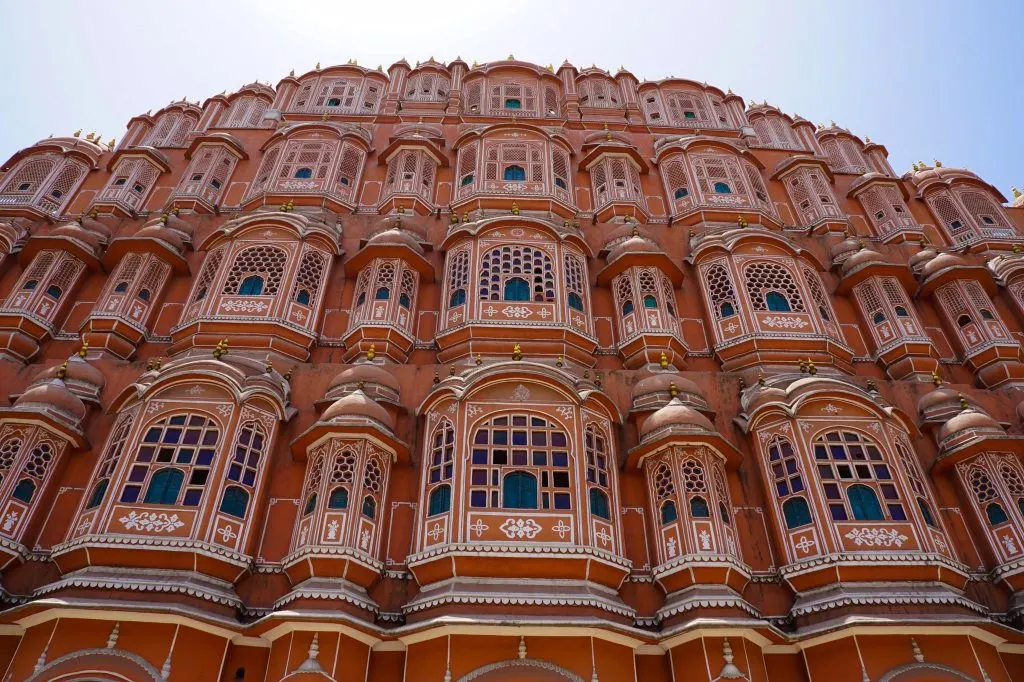
Khajuraho Group of Monuments
The Khajuraho Temples are a group of Hindu and Jain temples, located in the state of Madhya Pradesh, India. Most of the temples were built between 950 AD and 1050 AD by the Chandela Dynasty, and are famous for their intricate carved designs and the erotic sculptures, which gave them the nickname of Kama Sutra temples. However, in reality, only less than 10% of the sculptures are erotic in nature.
One of the best ways to reach Khajuraho is by train, and there are frequent overnight trains plying from Delhi. I highly recommend you to visit the Khajuraho Group of Temples, as a part of this Panna National Park weekend travel itinerary, as Panna National Park is hardly 35 kilometers away from Khajuraho.
The Khajuraho Group of Temples, if you are not aware, was recognized as a UNESCO World Heritage Site in 1986 for the embodiment of human creativity and imagination, history, architecture, heritage and love; and what originally were a group of 85 temples back in the 12th century, only 22 stood the test of time.
The whole complex is divided into three complexes – the Western, Eastern, and Southern group of temples, out of which the Western complex is the largest and most popular one.
Explored by Arnav Mathur from Eat | Travel | Live | Repeat
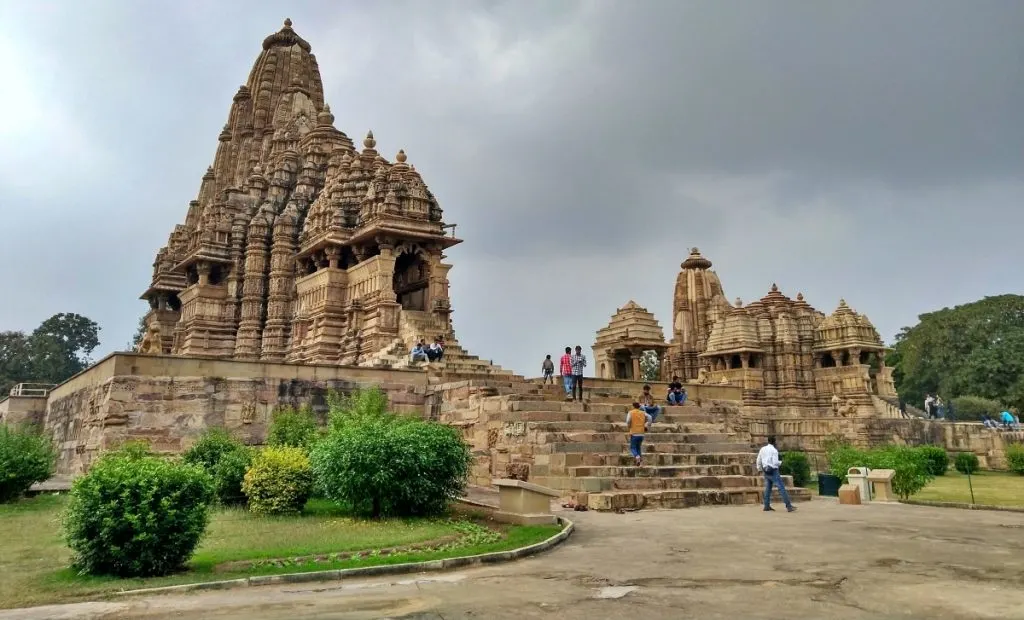
Mahabodhi Temple Complex at Bodh Gaya
The magnificent Mahabodhi Temple Complex in Bihar State in eastern India is one of the four holy sites linked to the lives of the Lord Buddha – precisely the realization of the Enlightenment. Emperor Asoka founded the Temple Complex Mahabodhi in the third century B.C. However its current iteration was constructed in the 5-6th century A.D.
It is one of the oldest Buddhist temples made entirely of brick from the late Guptan era, still standing. The complex is also thought to have had a significant impact on the development of brick architectural design over the century.
The existing Temple complex of Mahabodhi at Bodh Gaya comprising of a 50 m high grand Temple, Vajrasana, the Bodhi holy tree, and six other holy places of Buddha illumination, flanked by various ancient stupas of Votive vows. All edifices are well maintained and shielded through a circular inner, middle, and outer boundary that ensures the site’s ongoing integrity.
A seventh holy spot, the Lotus Pool, is just outside the south perimeter. Both the Lotus Pond as well as the temple area are encircled by two or three-story corridors, and the floor of the ensemble is five meters below the surrounding ground. This is also a unique archaeological feature recognizing and considering both the events which took place while Lord Buddha was here and tracking the evolution of Buddhist worship.
The Mahabodhi Temple Complex is very significant in the sense of Philosophical and cultural heritage as it is the site of the most significant occasion of Lord Buddha’s life, the period when Prince Siddhartha was illuminated, and Buddha was made.
This moment shaped the development of human thinking and faith and continues to influence in humanity’s history. Today acknowledged as the holiest place for Buddhist pilgrimage in the world, this Mahabodhi Temple Complex and is considered the birthplace of Buddhism.
Mountain Railways of India
The mountain railways of India, designated as the UNESCO Heritage site, includes the following three railway lines built in India’s mountains:
- Darjeeling Himalayan Railway
- Nilgiri Mountain Railway
- Kalka Shimla Railway
These Mountain Railways of India are outstanding examples of hill railways, which opened between 1881 and 1908. They are bold and have ingenious engineering solutions to the problem of establishing a useful rail link across mountainous terrain with great beauty. These railways are still fully operational and are the living examples of the engineering enterprise of the late 19th and early 20th centuries.
Darjeeling Himalayan railways, also known as Toy Train, bagged the title in the year 1999. It is a 2 feet gauge railway track that runs for 88 Kilometers between Darjeeling & Siliguri in West Bengal. Steam engines still power most trains on the route. And the most important feature of the track is that the line includes four loops and four ‘Z’ reverses, providing enchanting views of the Valley.
Siliguri lies 560 Kms from Calcutta and can be reached via road, rail, or air. The nearest airport and railway station is at Siliguri itself.
Nilgiri Mountain Railways got the title in the year 2005. It is a meter gauge railway that runs for 46 Kilometers in the Nilgiri Hills, from the town Mettupalayan to hill station Ooty or Ootacamund, in Tamil Nadu. Nilgiri rail is the only rack railway in India & the total track has 208 curves, 16 tunnels, and 250 bridges. The upward journey takes around 5 hours, whereas the downhill journey takes approximately 3.5 hours.
Ooty lies 272 kilometers from Bangalore and 125 kilometers from Mysore. The nearest airport is at Coimbatore, and the nearest railway station is at Mettupalayam.
Kalka Shimla Railway got the honor to be inscribed as UNESCO World Heritage of India in the year 2008. It is 2 feet 6 inches gauge track that runs for 96 kilometers from Kalka to Shimla and climbs an elevation from 2152 feet to 6811 feet in Himachal. The track has 103 tunnels & 864 bridges. Many of the bridges are multi-arched and are made with plate girders & steel trusses. The longest tunnel on the lone is the Barog Tunnel, which is 3753 feet long connecting Dagshai and Solan.
Kalka lies 28 kilometers from Chandigarh, and it can be reached via road or rail. The nearest airport and the nearest railway station is at Chandigarh itself.
Explored by Suruchi Tashi from AllGudThings
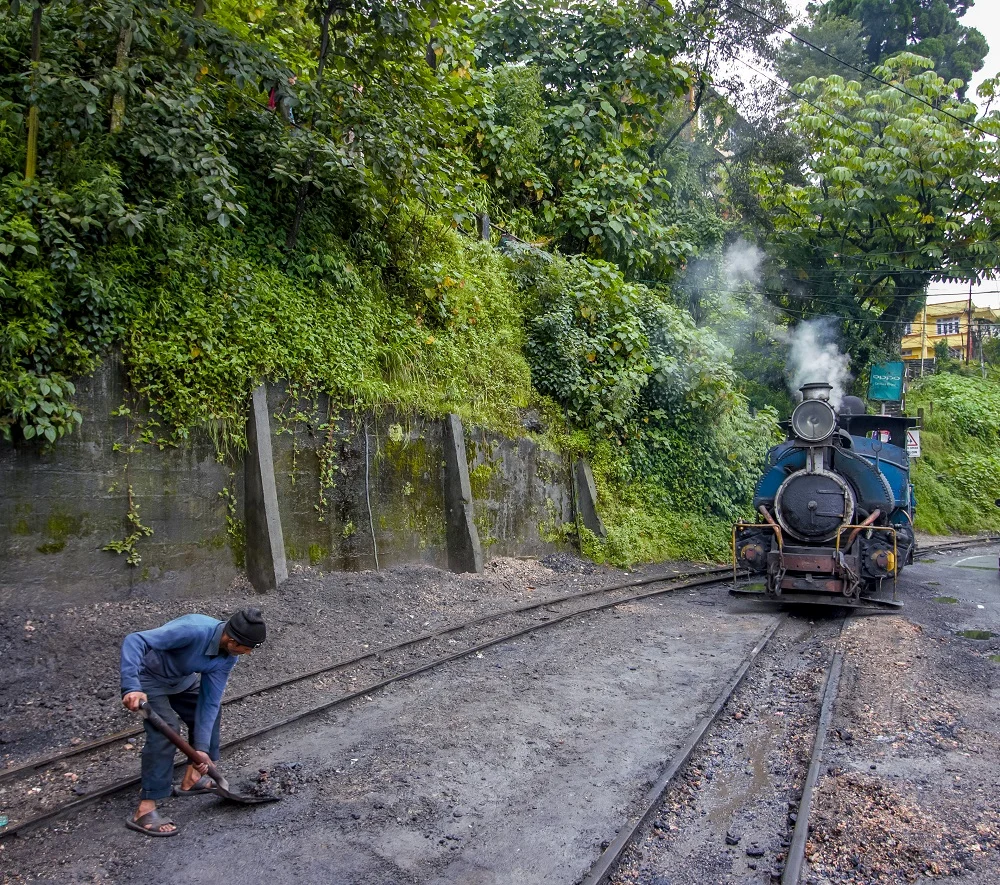
Qutb Minar and its Monuments, Delhi
Constructed in the early 13th century and found a few kilometers south of modern-day Delhi, the soaring red sandstone tower of Qutb Minar is one of India’s most recognizable landmarks. Standing 72.5 m tall, the structure tapes from its 2.75 m peak to around 14 m at its base through oscillating angular and rounded flutings.
The encompassing archaeological area comprises funerary structures – the most prominent of which are the brilliant Alai-Darwaza Gate, a treasure of Indo-Muslim art. Another highlight is the Quwwatu’l-Islam, the oldest mosque in northern India, composed of materials reused from around the destruction of around 20 Brahman / Hindu temples.
The beginnings of Qutab Minar are still somewhat controversial today. We know that is was built in 1193 to make the fall of Delhi’s last Hindu kingdom by the Qutab-ud-din Aibak.
As such, many people assume it was fabricated as a tower of supremacy to purport the commencement of the Muslim rule in India. Another story is that it was to serve as a minaret to call the faithful to prayer. The Qutb Minar has undoubtedly served as inspiration and the model for many spires and towers after, but it’s original intention is difficult to discern.
We may never know for sure, but no one can, however, dispute that the tower is not only one of the most beautiful monuments in India. And one of its most iconic world heritage sites.
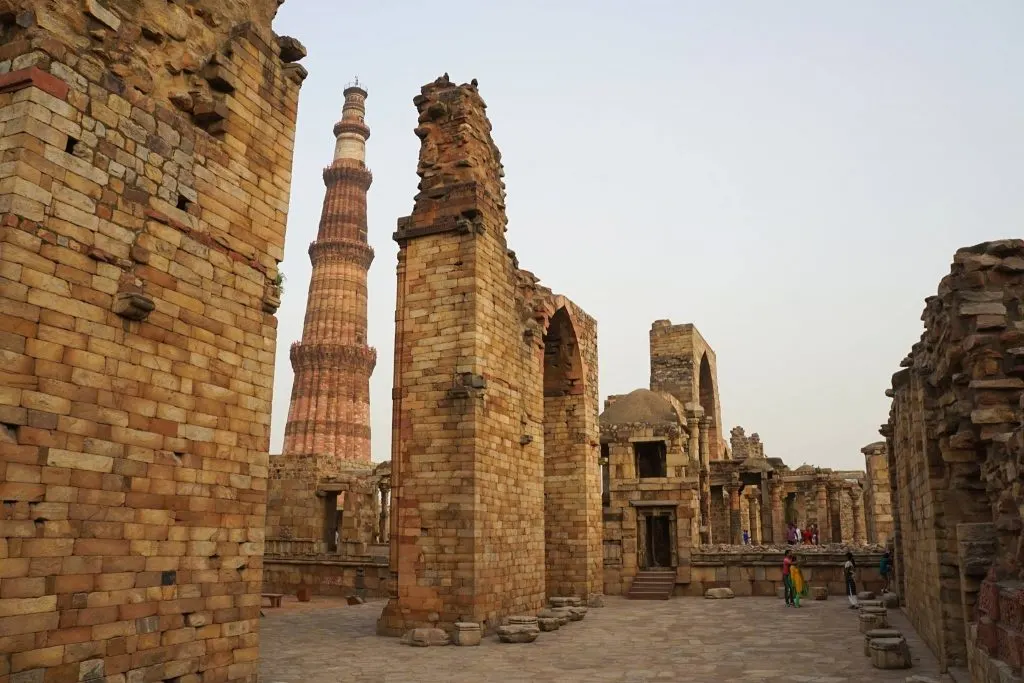
Rani-ki-Vav (the Queen’s Stepwell) at Patan, Gujarat
Rani ki Vav in Gujarat is one of the 3 UNESCO World Heritage Sites in the state. It is located in Patan, very close to the Pakistan border in India. Vav literally means stepwells, and Rani ki Vav means it’s the Queen’s stepwell. It is about 3hrs drive from Ahmedabad, the capital city of Gujarat. So it can be done as a day-trip from Ahmedabad (along with a visit to the Patan Patola handloom weaving centers).
Rani ki Vav was built by Queen Udayamathi in 11th C C.E. Stepwells were built in the arid regions of India (Gujarat & Rajasthan) to conserve water in the shade. You would have to go down several steps to reach the water stored in a tank in its depths.
This is one of those places that look underwhelming, to begin with, and then as I walked down the steps, the sculptural marvel here slowly got into me, and by the time I reached its depths, it was a sensory explosion! The detailing of the sandstone sculptures here is way too intricate, way too fascinating, and blew my mind!
It varies from simple geometric patterns to solo sculptures like Dasavatara to complicated scenes with multiple people like Ananthasayana. Everything from the walls to the pillars is sculpted; every inch of the entire space is sculpted.
For the whole concept of water conservation in an arid region with the mind-blowing sculptural marvel in 4 levels of the stepwell, Rani ki Vav has been inscribed as a UNESCO World Heritage Site in 2014.
Explored by Bhushavali of My Travelogue by Bhushavali

Red Fort Complex
The Red Fort Complex UNESCO World Heritage site in Delhi was constructed as Shahjahanabad Palace Fort – to serve as the capital of India’s fifth Mughal Emperor, Sha Jahan. When you visit, it is easy to see why it is named the Red Fort due to the mammoth red sandstone walls the enclose it.
The modern Red Fort Complex is adjacent to the old Salimgarh Fort, founded by Islam Shah Suri in 1546, and both together are protected as world heritage. The complex personal apartments are particularly noteworthy and consist of a series of pavilions linked by the Nahr-i-Behisht Stream, a continual water channel.
The Red Fort is known as the pinnacle of Mughal innovation and showcases this new stage of sophistication under the reign of Shah Jahan. Islamic designs influence the fortress’s design, but each pavilion shows architectural aspects typical of Mughal buildings that reflect a merger of Persian, Timurid and Hindu traditions.
The innovative planning and architectural styles of the Red Fort, along with the garden design, the subsequent buildings, and gardens in and out of Rajasthan, Delhi, Agra, and elsewhere in India devised by the Mughal testify to this.
The Red Fort can be toured every day of the week except Mondays between 9.30 am to 4.30 pm. The best time to visit is from October to February when it is not quite so hot.
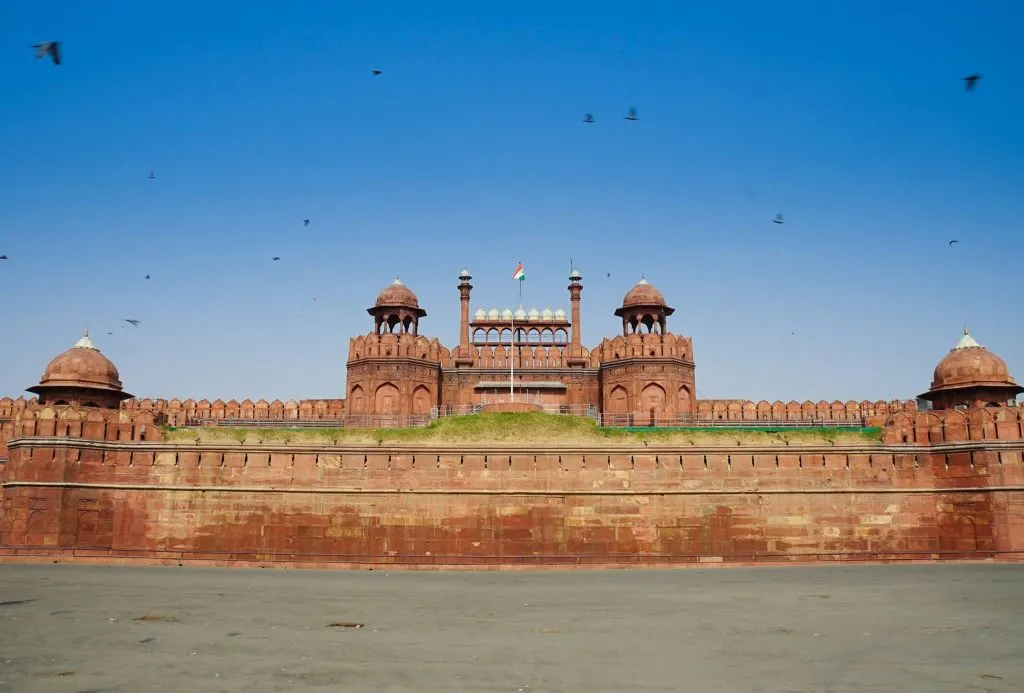
Rock Shelters of Bhimbetka
Bhimbetka Caves is one of the first art galleries of early man! Evidence found here prove that the caves were inhabited in the Lower Palaeolithic period that is over 200,000 years ago. That is why it is protected as a UNESCO World Heritage.
All paintings are themed on the lifestyle of early man. He expressed his feelings through them, and in a way, these paintings are valid documents that provide a glimpse into man’s prehistoric past. Observe carefully to notice their clothing, culture, nomadic, and agricultural lifestyle.
There are 15 caves with descriptions provided at the entrance of each of them. Cave 4 with 453 figures and Cave 15 with a painting of a huge boar are my favorite among them. It is awe-inspiring to think and ponder why all this art is on the ceilings? And how come they haven’t faded away in all these years? What chemicals have they used?
The tour gets over in an hour, but one can linger on exploring the interesting facts of rock shelters of Bhimbetka. After all, is this the place with the earliest traces of human life on the Indian subcontinent dating back to the Stone Age.
Bhimbetka Rock Shelters is located 40km away from Bhopal in Madhya Pradesh India, which is the nearest airport. Both private and public transports from Bhopal are in plenty. There are no eateries or good places to stay around, so include this in your day trip from Bhopal. The path is uneven all around, so wear good walking shoes. Washroom facilities are available.
Tickets cost INR 10 per person for Indians. INR 100 per person for foreign tourists. To be purchased at the entrance. They arrange tours in light motor vehicles particularly helpful for the aged and differently-able people.
Timings: Open from 7 am to 6 pm. But leave slightly early as the place tends to get deserted towards the evening.
Explored by Indrani of isharethese.com
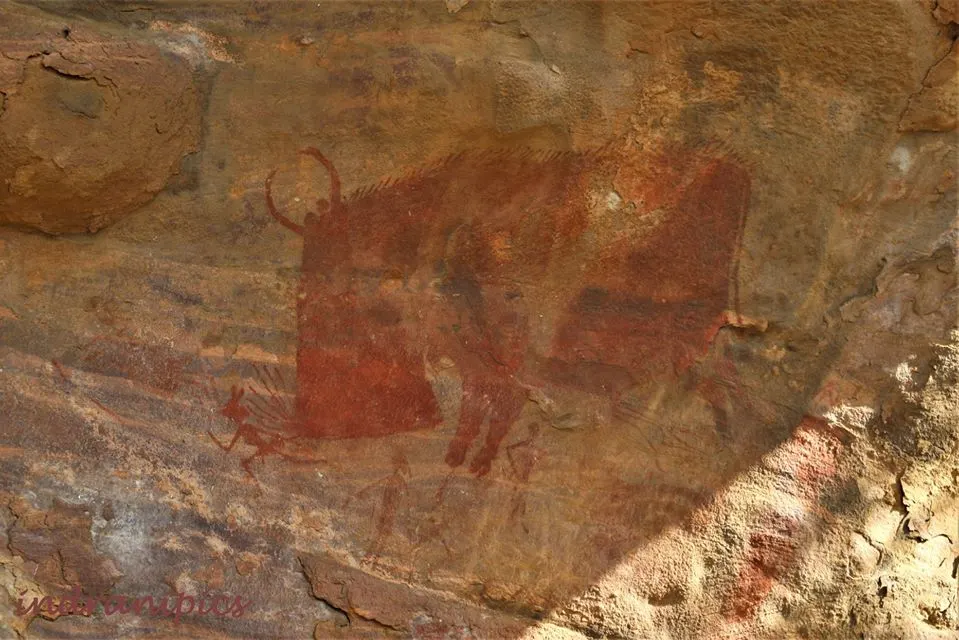
Sun Temple, Konârak
A majestic paean in stone to the Sun God stands not far from the shores of the Bay of Bengal in the eastern Indian state of Odisha. This is the ruins of the majestic Konark Sun Temple, a marvel of ancient architecture, art, and engineering.
It mesmerizes visitors with its sheer grandeur that endures till today even though the structure dates back to the 13th century. The Sun Temple of Konark, which was built as per the precepts of the Kalinga style of architecture, is built in the shape of a chariot with 24 wheels, the chariot of the Sun God pulled by seven horses. The Konark wheel is one of the most recognizable visual symbols of Indian heritage and is embellished with beautiful carvings.
The Sun temple is a historical and cultural bridge that links the eastern region of India to the north, including Kashmir’s Martand Sun temple and the Katarmal Sun Temple in Uttarakhand with the common denominator of Sun worship. The Sun Temple of Konark took 12 years to be completed, and many fascinating myths and legends are associated with its construction.
It is believed that the chief architect of the temple was one Bisu Maharana who was endowed with an astounding knowledge of structural design, astronomy, and electromagnetism. He built the temple with his team of about 1200 artisans under the orders of the King Narasimha Deva I.
It is believed that his wife was pregnant when he left home and later it is his 12-year-old son who comes to his rescue in solving the final conundrum regarding the erection of the temple. He hoisted a 52-tonne magnet to the roof of the temple, which ensured that the main idol with iron constituents hung mid-air in the sanctum sanctorum of the temple. The young boy then sacrifices himself by diving into the sea.
The Sun Temple Konark is an enigma with many unanswered mysteries, but what is a fact is the beauty of the intricate carvings of day to day life that adorn the outer walls and the ingenious architectural design of the temple which has ensured that it to be inscribed as a UNESCO World Heritage site.
The Sun Temple of Konark is about 67 kilometers from Bhubaneswar, the capital of the state of Odisha. Bhubaneshwar is well connected by air, road, and rail to other cities of India. One can hire a cab or take a public bus from Bhubaneswar to reach the Sun Temple of Konark.
Explored by Sandy & Vyjay from Voyager
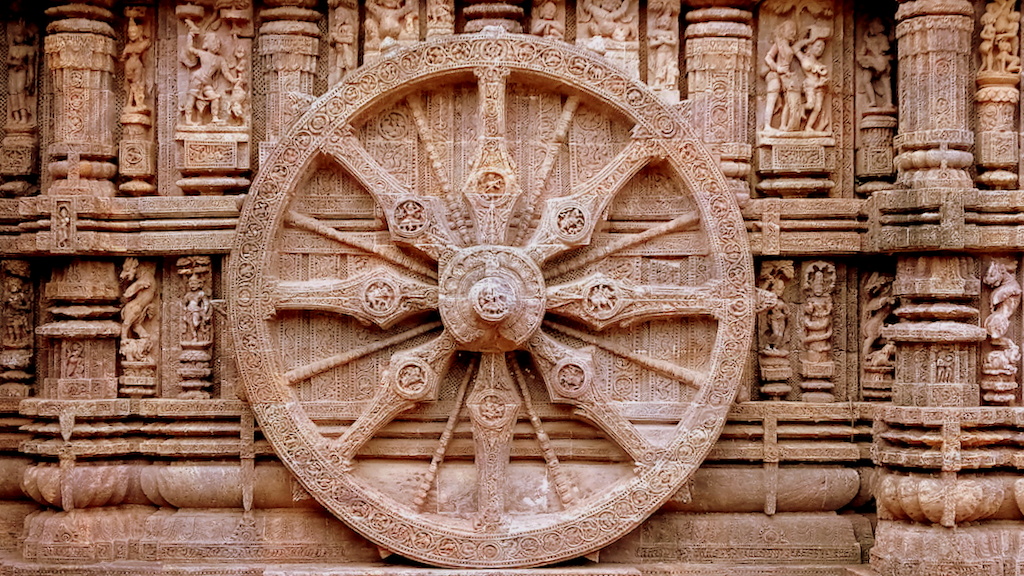
Taj Mahal
The Taj Mahal, located on the right bank of the Yamuna River in Agra, is considered the greatest architectural achievement in the entire range of Indo-Islamic architecture. One of the most famous UNESCO world heritage sites in India, and the world, it is likely you have already heard of it.
Mughal Emperor Shah Jahan built the Taj Mahal in memory of his wife, Mumtaz Mahal. Construction started in 1632 AD and completed in 1648 AD, with the mosque, the guest house and the main gateway on the south. The outer courtyard and its cloisters were added subsequently. For its construction, masons, stone-cutters, inlayers, carvers, painters, calligraphers, dome builders, and other artisans were requisitioned from the whole of the Mughal empire and also from Central Asia and Iran.
It is one of the best examples of a raised tomb mausoleum perfected by the Mughal and the jewel of Muslim art in India. One of the universally admired masterpieces of the world’s heritage, the perfect symmetrical planned Taj Mahal, represents the most exquisite architectural and artistic accomplishment through perfect harmony and exceptional craftsmanship. Don’t miss it.
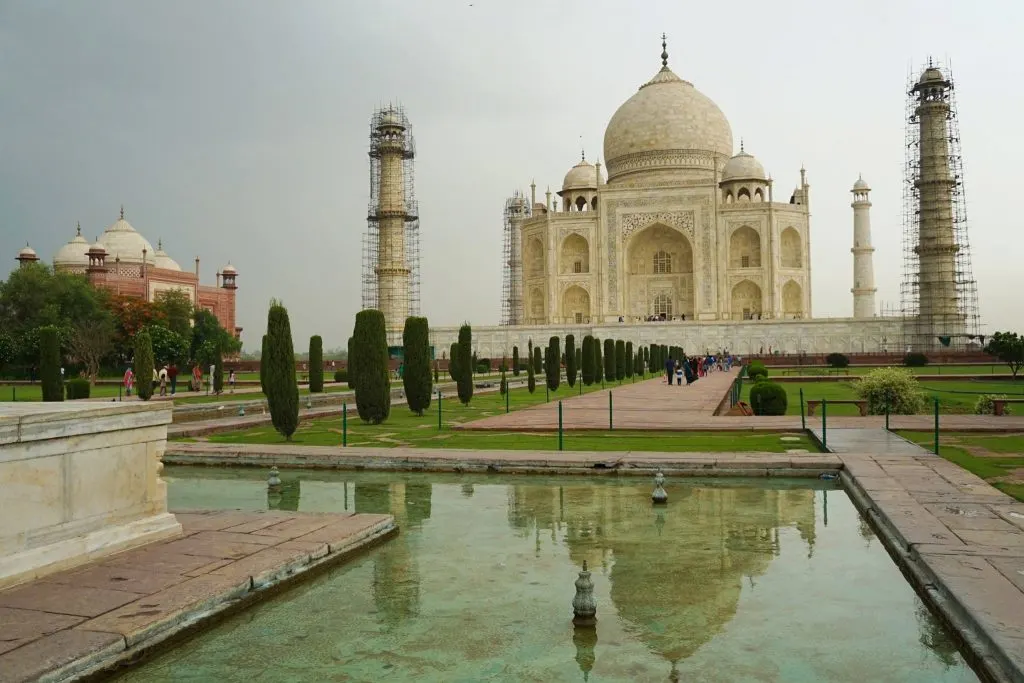
The Architectural Work of Le Corbusier, an Outstanding Contribution to the Modern Movement – The Complexe du Capitole in Chandigarh
Chandigarh is one of the most unique cities in India; there is nowhere else like it. It was a planned city, created by Prime Minister Jawaharlal Nehru, to give the state of Punjab a new capital after the partition of India in 1947. Naturally, after many years of travel in India, I was keen to see this clean-and-orderly city, and especially the Chandigarh Capitol Complex.
The Chandigarh Capitol Complex is the group of government buildings and monuments that were declared a UNESCO World Heritage Site in 2016. This was done as part of a wider inscription involving works around the globe designed by renowned Swiss-born French architect Le Corbusier (real name Charles-Édouard Jeanneret).
The complex includes three buildings: the Punjab and Haryana High Court (1955), Secretariat (1958), and Legislative Assembly (1961). It also encompasses three monuments: the Open Hand Monument, Geometric Hill, and Tower of Shadows. The Open Hand Monument was built much later in 1985, and it’s the symbol of Chandigarh. It rotates with the wind and symbolizes peace, prosperity, and the unity of mankind.
It was fascinating to see these buildings, and the entire site — and planned city — as they seem to capture a moment in time, the birth of modern architecture. They are somewhat dated, but the use of color and geometric shapes is intriguing. And of course, the fact that they don’t resemble anything else in India is refreshing.
Personally, my favorite part of the complex is the man-made lake Le Corbusier had built nearby by damming the Sukhna Choe, a seasonal stream coming down from the Shivalik Hills. When I was in Chandigarh for a few days, I made several trips to Sukhna Lake to walk the promenade and through the forest park. It is a favorite destination for city residents and for migrating birds — it’s a birdwatchers paradise! The famous Rock Garden of Nek Chand is also near Sukhna Lake. This area is the heart and soul of the city.
Explored by Mariellen from India For Beginners
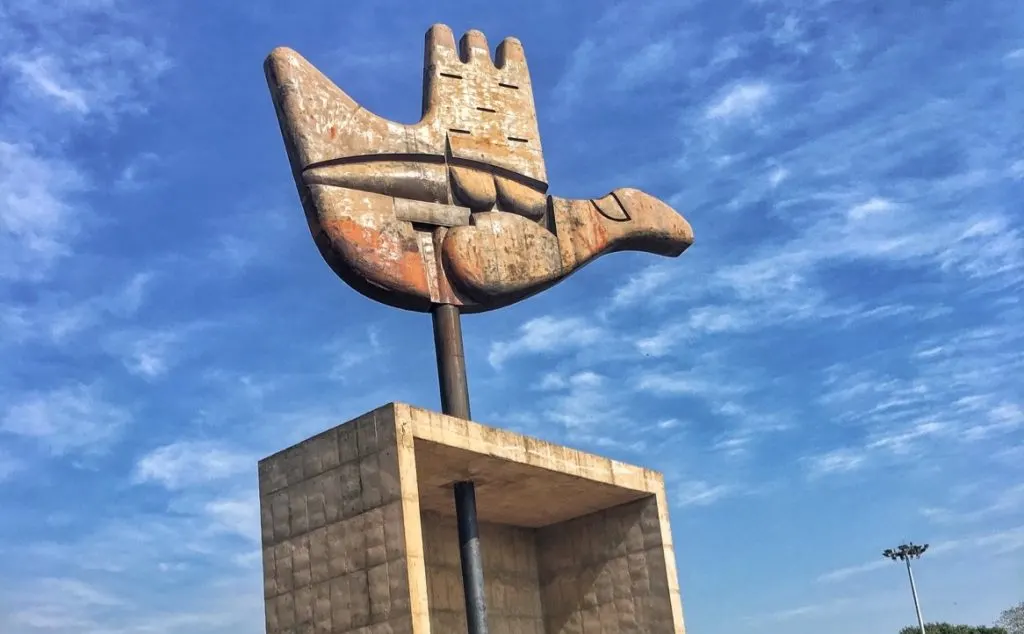
The Jantar Mantar, Jaipur
The Jaipur Jantar Mantar is an astronomical observation platform designed at the beginning of the 18th century. This requires a collection of some 20 principal fixed instruments. They are colossal representations of known instruments built-in masonry, but they have distinctive features of their own in many instances.
The Jantar Mantar is an illustration of the celestial abilities and cosmological ideas of the court of the intellectual prince towards the end of the Mughal era. The Jantar Mantar Observatory in Jaipur is the most prominent and best-preserved collection of static monumental instruments installed in India in the first half of the eighteenth century, many of which are the largest ever installed.
Engineered for naked-eye observation of astronomical locations, they represent a range of technological and instrumental advances.
The Observatory is part of a culture of Ptolemaic positional astronomy practiced by many civilizations that taught the Earth is at the center of the universe with the sun, moon, and planets all revolving around our world. This interpretation led to the creation of the Zij astronomical tables.
Today the Jantar Mantar stands as the mt final monumental culmination of this philosophy before more modern advances in astronomy taught us the Earth was not central to the universe. Inspired by its founder, Prince Jai Singh II, the Observatory was a gathering place for various scientific societies and a center of interactions related to cosmology.
The Jantar Mantar was also an emblem of royal power by its spatial features, time regulation, and moral and astrological forecasting abilities. The Observatory is a profound manifestation of a mixture of demands that were, at the same time, political, scientific, and religious. The monument was finished in 1734, and today is home to the largest stone sundial in the world.
One of the easiest UNESCO world heritage sites in India to visit, the best time of day to tour the site is around midday when the sun is directly above. This makes interpreting the reading and purpose of many of the instruments much simpler.

Victorian Gothic and Art Deco Ensembles of Mumbai
Mumbai got it’s third UNESCO inscription (after the Elephanta Caves and Chhatrapati Shivaji Terminus) in 2018, a glorious collection of art deco buildings set around the Oval Maidan, a large recreational ground in the fort area of Mumbai. A part of history that lives on in the chaotic bustle of this city that never sleeps, these buildings are exceptionally beautiful and represent the processes of transformation that Mumbai has experienced in the 19th and 20th centuries.
While many people wander pass by these buildings daily, most do not even realize that these are iconic monuments in themselves. What makes them special? They are scattered across ”town”, as we Mumbaikars call it. The southern part of Mumbai has always been the closest to the historic Bombay, and these buildings dispersed across it are remnants of that very history.
The Victorian Gothic ensemble surrounds the east of Oval, and the west side is flanked by the Backbay Recreation and Naval Drive buildings in the Art Deco style – representing two eras. In total, there are 94 buildings around Fort, Churchgate, and Marine Drive and are collectively known as Mumbai’s Victoria Gothic and Art Deco ensemble.
If you choose to walk through the area, the whole trail would be around 2 hours, and you will cover the Bombay High court (you cannot visit this from inside unless you have permission), the National Gallery of Modern Art (NGMA) and Chhatrapati Shivaji Maharaj Vastu Sangrahalaya (CSMVS) which was formerly known as the Prince of Wales Museum. Each of these is known for its Victorian, Neo-Classical, and Indo-Saracenic architecture: Victorian architecture of 19th century and Art Deco buildings from the 20th century.
What I love about these buildings is the fact that they co-exist with modern Mumbai. Like a city grew and developed around these buildings, which signify the real, quintessential ”BOMBAY”. To explore these sites, one can simply take a walking tour starting from CSMT station and move towards Oval Maidan in Churchgate and then complete the trail in anticlockwise with the museum and the art gallery.
Explored by Divyakshi Gupta from the Quirky Wanderer
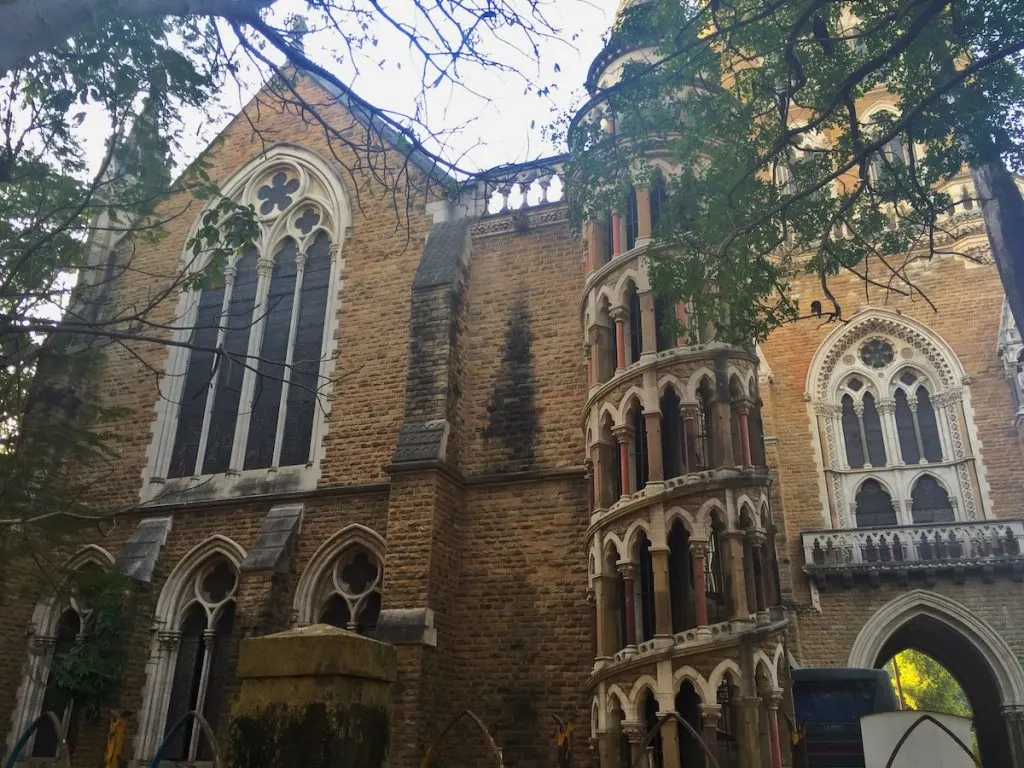
Natural UNESCO World Heritage Sites In India
Great Himalayan National Park-Conservation Area
This majestic Himalayan wilderness area in the northern Indian state of Himachal Pradesh is distinguished by soaring alpine peaks, open meadows, and riverine forests. The property comprises 90,540 hectares of upper mountain glacial and snow meltwater sources from many rivers.
Its water supply catchments are critical for the well-being of millions of downstream users. The Great Himalayan National Park Conservation Area (GHNPCA) serves to protect the forests and alpine wilderness of the Himalayan mountains. It forms part of the Himalayan biosphere reserve and protects 25 species of trees and a wide variety of fauna, several of which are at risk. It gives the site tangible significance for the conservation of biological diversity.
The GHNPCA is also one of the newest inscribed UNESCO sites in India, meaning very few people know about this area. Outside of India, many tourists instead head to Nepal – but this is likely to change as word gets out about this fantastic area. Located at around 1700 and 5800 meters above sea level, there are plenty of options for activities here. The lower areas are often used by locals and somewhat easier to explore on your own. This area is known as the ecozone of the National Park, and dozen of villages are found here.
Many of these villages are linked by motorways, while others require a few hours of walking. Virtually every village, therefore, is a tourist destination by itself, as it blends the Himalayas’ aesthetic surroundings with enigmatic local history, mythology, folklore and cuisine, and epic trekking.
As you move away from the core ecozone, you will find higher locations are difficult to access and can be dangerous. Local guides and multi-day treks are needed, though there are also nice homestays in some areas as locals take advantage of tourism.
The best and quickest way to reach many such GHNP villages would be by bus to Manali from Delhi. However, don’t take the bus all the way to Manali and instead switch at the 3-km-long Aut Tunnel for local buses bound for Banjar or Sainj. Locals are generally very friendly and happy to help you out.
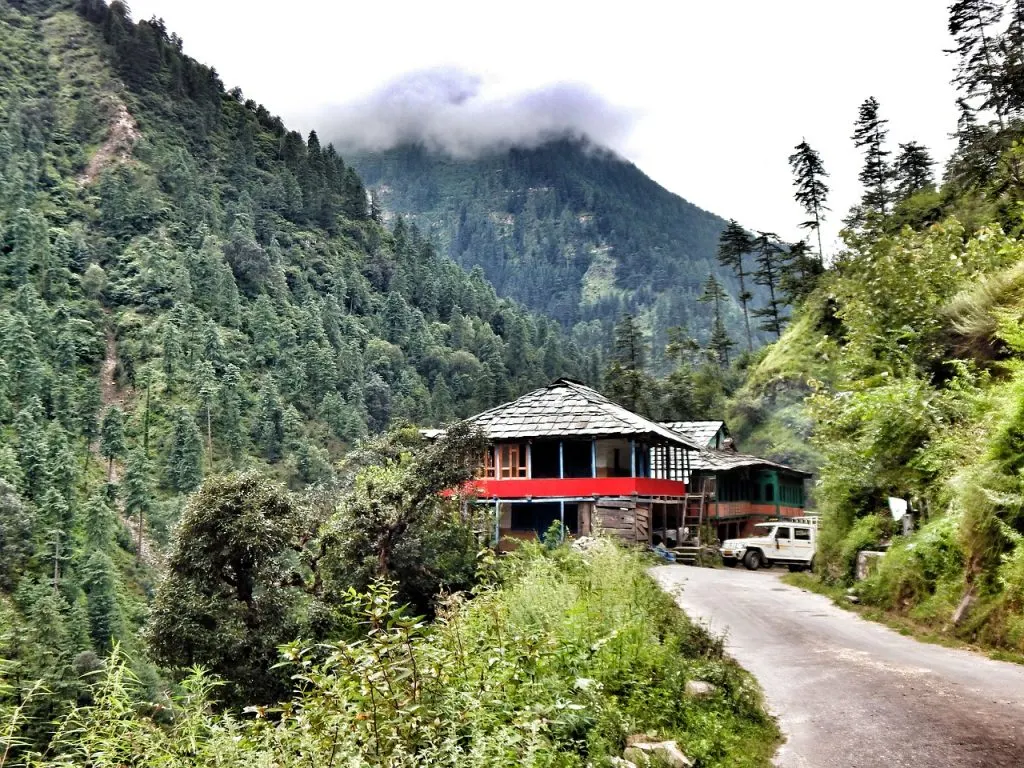
Kaziranga National Park
Kaziranga National Park, the last frontier of the one-horned Rhino, has a rather mellow story to share. The roads leading to the UNESCO Heritage park are shrinking in with tea gardens, a remnant of British colonial days.
The villages bordering Kaziranga National Park are teeming poachers now turned into forest guards. They work tirelessly to bring back the rhino population from the verge of extinction. As a result, the Rhino has been embedded in the art and pride of Assam in general.
The one-horned Rhino is known to be a unique species of the prehistoric herbivorous clan. Once upon a time, they thrived at the foothill of Himalayan Terai, from modern-day Pakistan to the far east of India. It is for the humans, specifically their greed of sadistic taxidermy show off, rhino numbers rapidly declined during the British regime. Considering they would often frequent the agricultural land, farmers considered them to be rather poor pests and did not shy away from the occasional bloodbath.
In recent political history, the horn of the Rhino has been a prized possession of the insurgent groups, fetching hefty sum at the black market. On the roads of Hong Kong and China, horns of Rhino, among other exotic animal body parts are treated as a medicine.
Poor Rhino grazed without having a clue of all the nasties. It is not until the late 90s the Indian government, as well as UNESCO, took definitive care to secure a geographical region to foster the rhino population. Kaziranga was a quick success.
Needless to say, a lot of the initiatives have been taken up by the Assamese people at a grassroots level. The wall, preschool book, folklores have happily rendered a place for the Rhino. Widespread awareness campaigns have taken place to secure their home. Man and wildlife conflict has been restricted, with strict regulations being in place to curb the impact of deforestation. I learned all of it while trailing the cemented road on a safari keep inside Kaziranga.
Besides the Rhino, Kaziranga houses a wide variety of flora and fauna. The royal Bengal tiger, leopard, Asian monitors, wild water buffalo, several rare bird species roam in without fear. Bramhaputra floods the plains of Kaziranga every year; hence the park is closed during the rainy season. The best time to visit Kaziranga is during the drier months, with late February being my favorite.
Explored by Madhurima from Orange Wayfarer
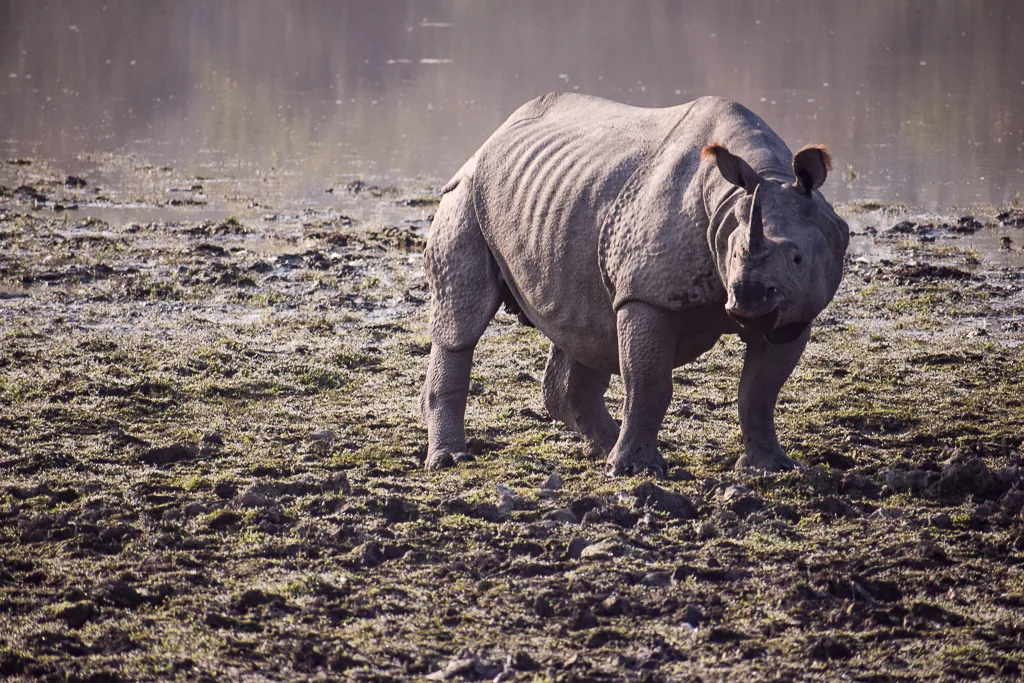
Keoladeo National Park
Located in Rajasthan State, Keoladeo National Park is a significant wintering ground for migratory waterfowl. It is also esteemed for the large non-migratory bird communities. This interconnected ecosystem of grasslands, woodlands, forest swamps, and wetland areas is just 2,873 hectares but has registered over 375 bird species as well as a wide variety of other creatures.
This exceptional green biodiversity oasis is even more noteworthy when considering how it managed to persist within a broader settled and human-dominated landscape. The Keoladeo National Park was established in a natural wetland back in the 19th century – however, it was protected as a duck hunting reserve rather than focussed on the conservation of all species within.
While hunting has ended and the area was designated a national park by 1982, its continued survival relies on a protected flow of water from reservoirs that lay outside the park boundary.
The well-built network of dikes and sluices continues to ensure areas of the park receive the varying water levels required to house its many types of avifaunas. Because of its geographic location in the heart of Central Asia, vast numbers of ducks, geese, coots, pelicans, and waders make this world heritage site their home in the winter.
The Keoladeo National Park was the last known central wintering site in the threatened SiberianCrane, as well as being the location of wintering for other internationally endangered birds, such as the Greater Spotted Eagle and the Imperial Eagle. In the mating season, Multiple species of herons, ibis, cormorants, spoonbills, and storks flock here and in above-average flooding event over 20,000 individuals can be found nesting here.
Formerly known as the Bharatpur Bird Sanctuary, the best time you can organize your travels here is from August – November if you are interested in resident bird watching. October – March is the best time to spot migration birds.
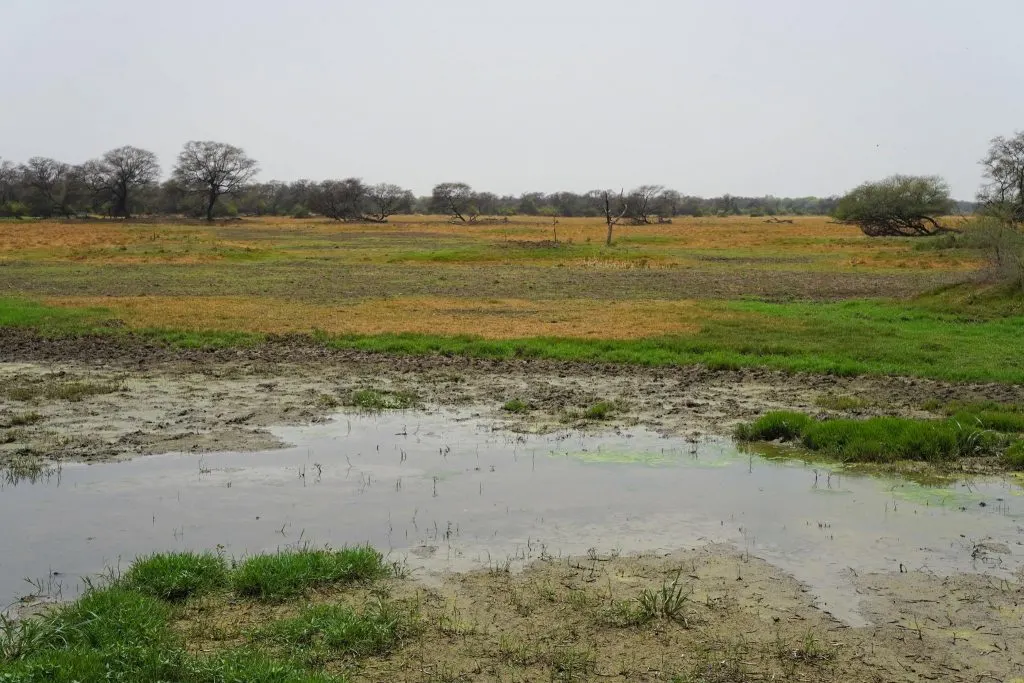
Manas Wildlife Sanctuary
Manas National Park is one of the most famous and iconic UNESCO Heritage Sites in India. Located in the state of Assam in Northeast India, Manas National Park is one of the few wildlife destinations in India having five conservation status. It is also a tiger reserve, elephant reserve, an important bird area along with being a UNESCO Heritage site.
Quite naturally, Manas National Park is a biodiversity hotspot covering an area of about 39,000 hectares. The Manas River flows through the national park making it one of the most beautiful landscapes in Assam. Manas is the home to a number of critically endangered animals like the one-horned rhinos, tiger, pygmy hog, swamp deer, among many others. Manas also form the habitat of the great Indian elephants.
The best part of Manas National Park is its diversity, both in terms of wildlife as well as the landscape. The hilly terrains amaze as much as the grasslands of Manas. But for me, the most beautiful place inside this national park is the Manas River. After driving through the tropical forests, we encountered a change of scenery abruptly.
The blue waters of the Manas River flowing across the rocky terrains were in front of us. In our day-long safari, we had seen elephants, rhinos, Himalayan Giant Squirrels, water buffaloes, Himalayan Gaurs, and a great variety of birds. Tigers eluded us, but we did see their pug-marks.
How to reach: Guwahati Airport is the nearest airport. You can hire a car from Guwahati to Manas National Park.
Explored by Amrita and Agniswar from Tale of 2 Backpackers
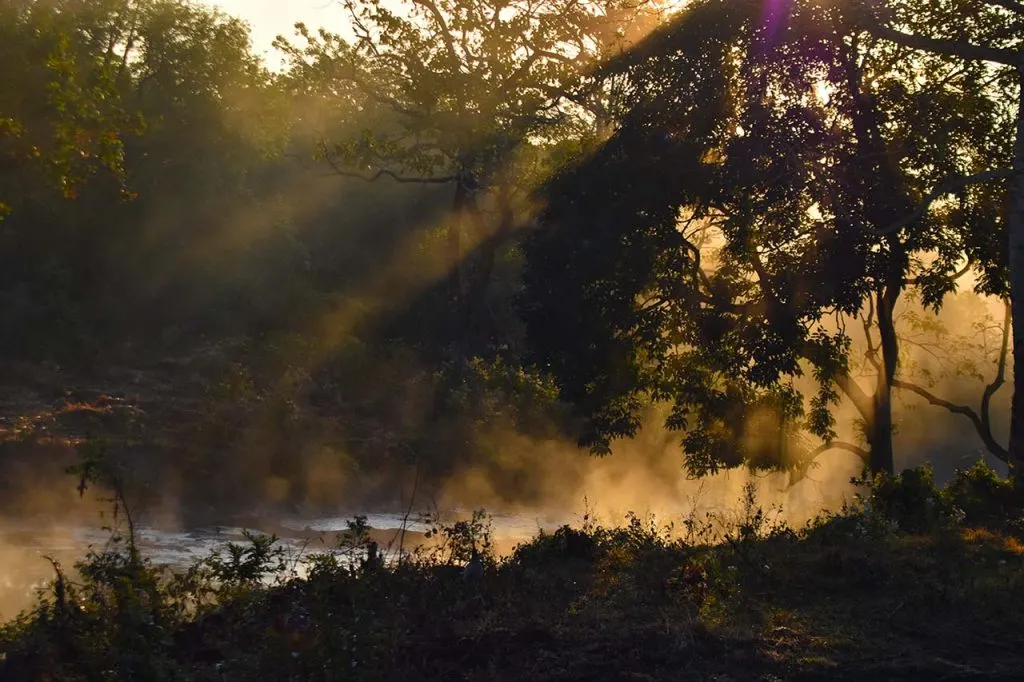
Nanda Devi and Valley of Flowers National Parks
Valley of Flowers National Park, located in the Chamoli district in the state of Uttarakhand in the Himalayas, is one of the beautiful national parks in India. Nanda Devi National Park surrounds it in the east and the mountain ranges of the Zanskar in the north and the Great Himalaya in the south.
A trek to the Valley of flowers takes around five days to a week. The nearest town to the park is Ghangaria, which can only be reached by a trek, from where it takes a day to the park. You cannot camp there, so you need to return the same day.
The landscapes of the Valley of flowers are gorgeous, and one of the most colorful I have ever seen – Mountains with waterfalls in between them, streams between the valleys carpeted with flowers of every color that you can imagine – It is a delightful treat to the senses.
The park is located at over 3600 meters above sea level, known for thousands of rare species of Himalayan meadows home to alpine wildflowers and endangered animals, including snow leopard, musk deer, and Asiatic Black Bear. The unique ecosystem found in this region of the Himalayas has led to the growth of floral species not found anywhere else in the world.
The Valley of Flowers, along with Nanda Devi National Park, running for over 8 km, was added to the list of UNESCO world heritage sites under World Network of Biosphere Reserves category in 2004 for its vibrant floral and wildlife that’s been conserved since hundreds of years.
Explored by Reshma Narasing from The Solo Globetrotter

Sundarbans National Park
The Sundarbans is the biggest surviving mangrove forest in the world and among the world’s most biologically active habitats. The forest and rivers along the Ganges and Brahmaputra Rivers across India and Bangladesh host a wide variety of wildlife, including many endangered species.
The mangrove natural environment continues to support the biggest number of tigers in the world who adapt to an almost amphibious life here. Tigers of the Sundarbans can swim for long distances and feed on fish, crabs, and water monitors lizards – behaviors not common in tigers elsewhere in the world, including in the Ranthambore National Park.
Sadly, tigers here are also known as “man-eaters,” perhaps because of the reasonably high number of interactions with local residents who share the land with them.
The Sunderbans’ island terrain is of extreme economic importance to millions in the surrounding areas as they provide ecosystem services such as storm barrier protection and shore stabilization, fertilizer and sediment trapping. They are also incredibly important as a source of wood and natural resources, which is becoming increasingly challenging to sustain along with the wide variety of marine, benthic and terrestrial species that rely on the Sunderbans for habitant.
The Sunderbans are a prime example of ecological mechanisms taking place such as monsoon rain, delta development, tidal impact, and plant colonization. The region of approximately 133,010 ha is calculated to constitute about 55% forest land and 45% wetlands in the form of tidal rivers, canals, and giant estuarine mouths. It is stated that roughly 66% of the entire mangrove woodland area is in Bangladesh, with the remaining 34% in India.
Interestingly when the Indian Sundarbans were recorded in 1987, it was proposed that the site be extended to include the (larger) Bangladesh Sundarbans. Later, when the Bangladeshi Sunderbans got inscribed in 1997, it was again recommended that the 2 sections be merged into 1 trans-national UNESCO site as is common.
However, international cooperation was not forthcoming for whatever reason, and now the Sunderbans are listed as two distinct UNESCO sites despites being similar ecologically. The only major difference is that the Bangladesh Sunderbans is more saline as salinity increases from east to west across the Sundarbans.
While the ongoing ecological integrity of the Sunderbans is of concern, a visit to this fantastic UNESCO site in India not only allows you an opportunity to come face to face with tigers – but also to promote ecotourism and help converse this amazing place for future generations.
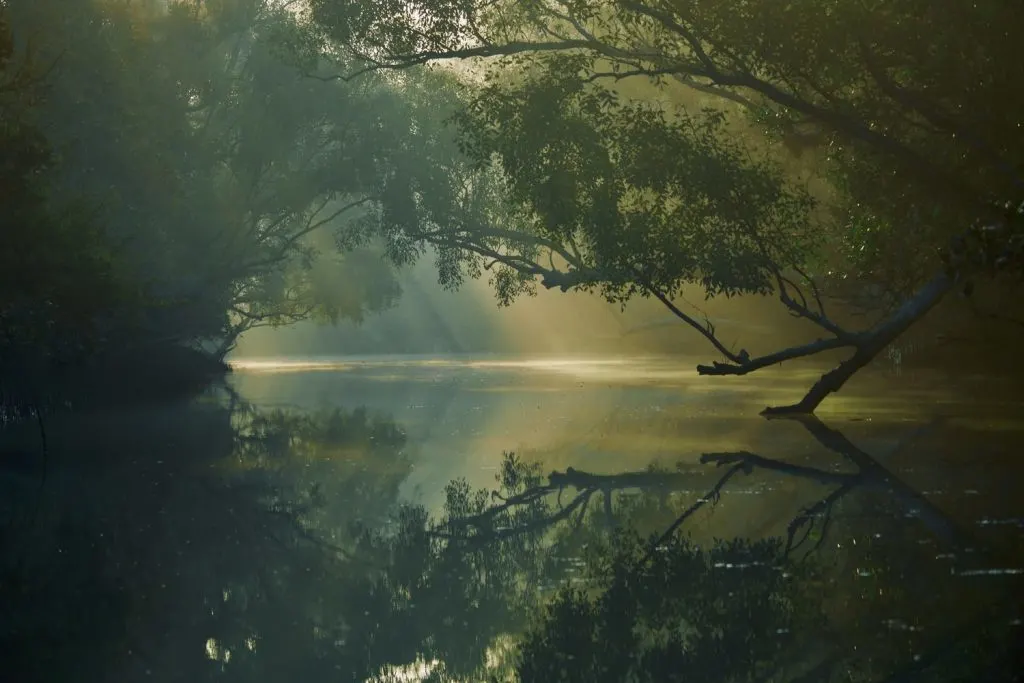
Western Ghats
Sahyadri, aka The Western Ghats, is a beautiful mountain range along most of the western coast of the Indian subcontinent, mainly in the states of Kerala, Tamil Nadu, Karnataka, Goa, Maharastra, and Gujarat.
The Western Ghats range has been honored with UNESCO World Heritage site status on account of its unique, rich biodiversity of flora and fauna found in these mountains. This mountain range is home to national reserve forests, gorgeous waterfalls, amazing national parks, and wildlife sanctuaries. The forests on these ghats have been made world heritage sites. Even to date, new flora and fauna are being discovered in this rich nature spot.
The Western Ghats is home to many charming hill stations like Kodaikanal (Tamil Nadu), Matheran (Maharastra), Coorg (Karnataka), Munnar (Kerala). Whichever spot on the ghats you decide to visit, you will be thrilled with the natural wealth there. I visited Lonavala in Maharastra, Kodaikanal in Tamil Nadu, Coorg in Karnataka, Wayanad in Kerala, and hiked in many wonderful spots in these splendid mountains.
But my most favorite place is Kodaikanal. Kodaikanal is lesser-known compared to other hill stations in this mountain range but is incomparable in its beauty. The lesser the crowds, the sweeter the deal, ain’t it?
How to get there: All major cities in India have train and bus connections to the hill stations and other nature spots in these ghats. For instance, you can get a bus or a train to Kodaikanal from Chennai or Bangalore, among other cities. Similarly, Matheran can be reached by bus or train from Pune. Coorg is easily reachable by bus or train from Bangalore.
Explored by Priyadarshini Rajendran from Glorious Sunrise.
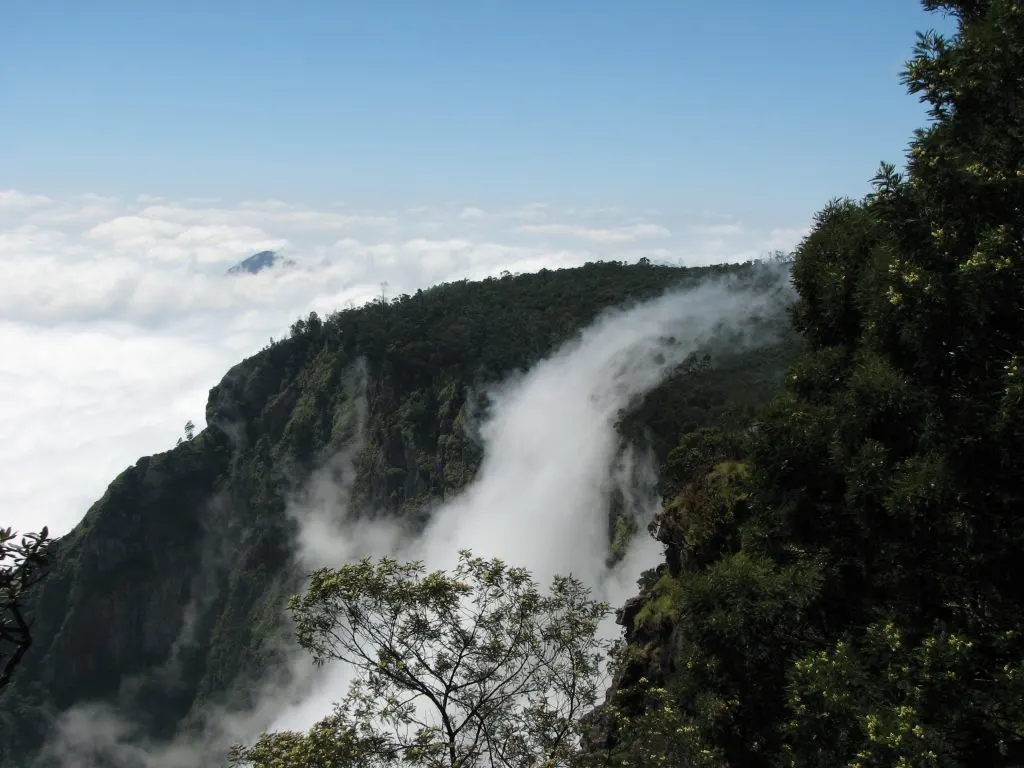
Mixed UNESCO World Heritage Sites In India
Khangchendzonga National Park
Nestled in the lap of the regal Himalayas, the Khangchendzonga National Park is a high altitude National Park in Sikkim, India. The park gets it’s name from the third-highest mountain peak in the world, ie. Mount Kanchenjunga (8,586 meters). It is also a Biosphere reserve that’s home to a diverse ecosystem of flora and fauna.
It stretches from the picturesque Lhonak Valley in north Sikkim to the ancient town of Yuksom in West Sikkim, spreading over an area of 1784 square km. The Khangchendzonga National Park is a nature lover’s delight as it contains robust mountains, tranquil lakes, gorgeous valleys, lush forests, and pristine glaciers. The highlight of the park for me though, was the sight of the magnificent Zemu glacier.
The reason why I personally love this place is that it is a mesmerizing amalgamation of natural beauty and cultural richness. There are several Buddhist mythical stories that are associated with the elements and sites in the park, making it a sacred and revered site for the Buddhists. The fact that Khangchendzonga literally translates to “Abode of the Gods” and is worshipped as a “Guardian Deity” further proves it’s significance in the Sikkimese culture.
It’s like a blanket that not only protects species of rare plants and animals but also is believed to shelter holy religious texts. Therefore, it was recognized as a UNESCO World Heritage Site in 2016, becoming the first “Mixed Heritage” site of India. The fresh air, rhododendron decorated path, wild alpine trees, and surreal view of the snow-clad mountains make visiting this place an unforgettable experience.
The best time to visit the Khangchendzonga National Park is during the summer season, which is typically from the end of March to early June. As far as getting to the park is concerned, you can take a flight to the nearest airport, i.e., the Bagdogra airport in Darjeeling, West Bengal. Then, you can travel for 4 hours by road to reach Gangtok (128km). The National Park is 47 km away from Gangtok.
Alternatively, you can also take a train to the New Jalpaiguri (NJP) railway station in Siliguri, West Bengal. From there, a 4-hour road journey gets you to Gangtok (122km), and you can continue by road to reach the National Park.
Explored by Vaibhav Mehta from The Wandering Vegetable
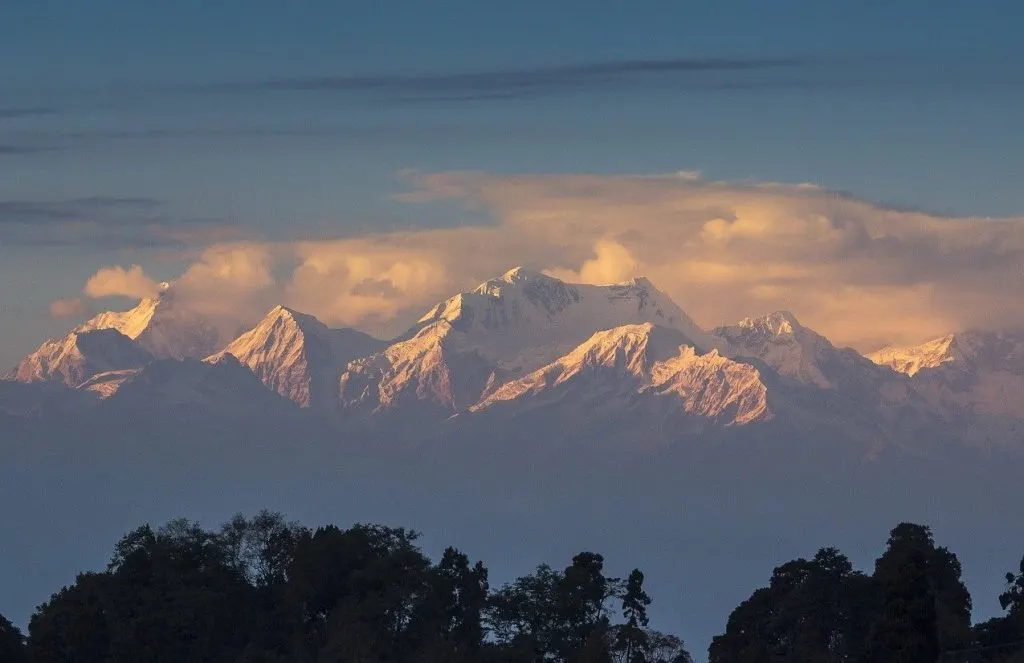
And there you have it—all of the world heritage sites in India. Hopefully, you have learned something about this country’s history already through these sites. Maybe some of them have even inspired your future travels. While overtourism is most certainly an issue, India has recognized this issue and is taking steps in the right direction.
If you get the opportunity to visit, please make choices that encourage the protection of these special places for future generations. This includes consideration of the transport you take in India, along with which India tour companies you choose to support.
Happy exploring!
